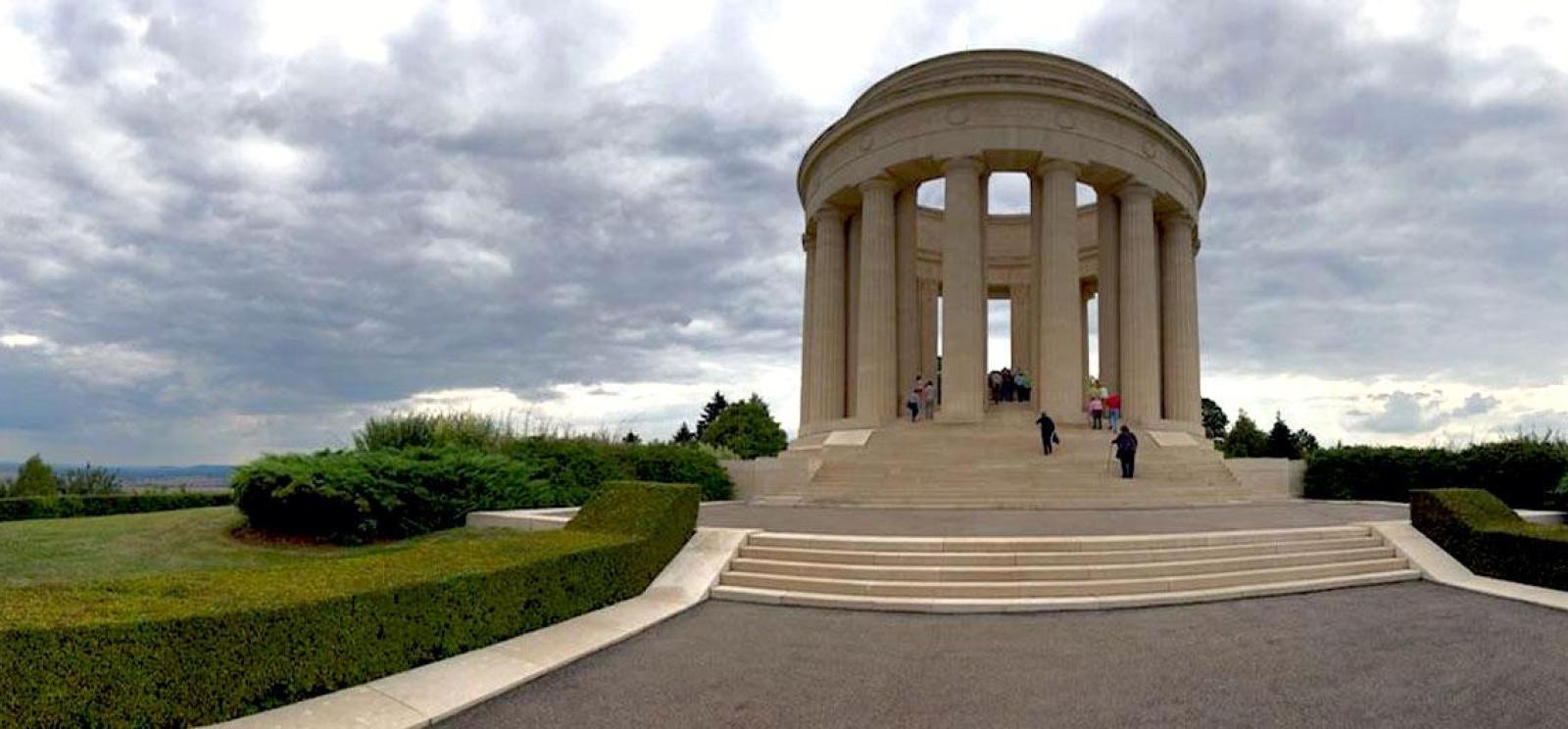2018 is the centennial anniversary of two of the most significant battles ever fought by the United States military. In June 1918, the U.S. Marine Corps endured the legendary conflict at Belleau Wood, while in September, the battle at the Meuse-Argonne involved more than 1.2 million men, the largest single battle ever undertaken by American forces. Read along with us as we walk through the forests of Belleau Wood, alongside the Marne River, and to the ground where a young Harry S. Truman directed his guns and see the woods where Alvin York earned his fame.
National WWI Museum and Memorial Curator of Education Lora Vogt shares her experiences on this journey, with a day-to-day glimpse into the 2018 Battlefield Tour.
DAY 1
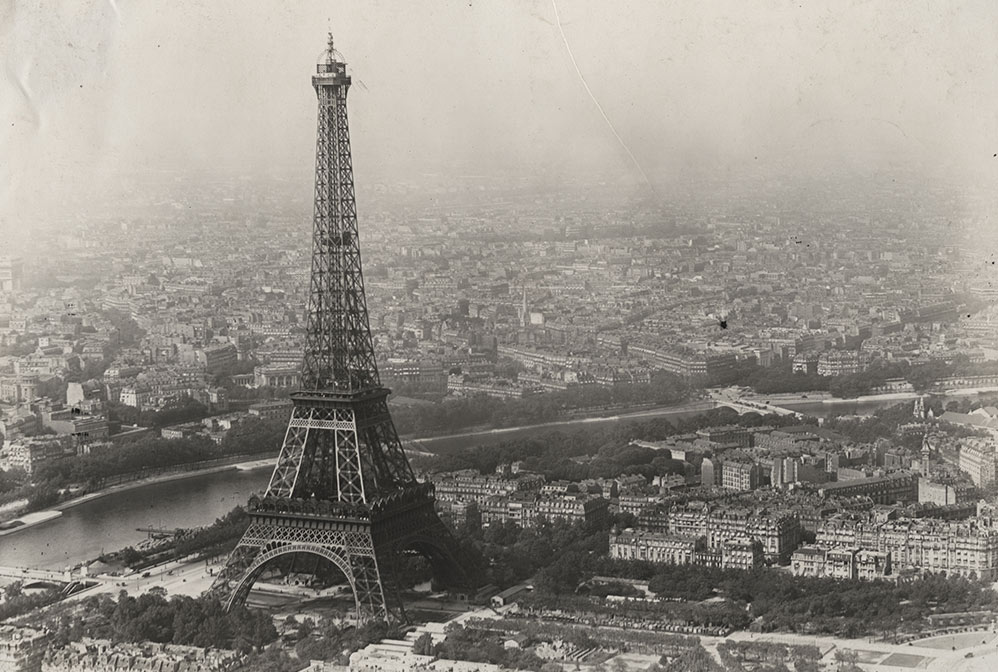
Paris.
It filled the stories of many American "Doughboys" and volunteers — and is the beginning of the story for our 2018 Battlefield Tour. Our participants—thirty individuals from around the U.S., Great Britain and Singapore—met near the Charles de Gaulle Airport, some with great appreciation for the local café au lait. For many among us, this year is a family affair - following in the footsteps of fathers, grandmothers, great-uncles and more. For others, it is an opportunity to travel with friends who are like family and to make new memories with new acquaintances.
Journeying east across the Champagne region towards the Verdun and Lac de Madine, we traveled the way of the ambulance drivers, soldiers, pilots, tank battalions, U.S Army Signal Corps Telephone Operators… names known and unknown to history who traveled over the Voie Sacrée, the "Sacred Way."
Our first stop was at the former Souilly Town Hall, which became the Headquarters of John J. Pershing. The mayor of Souilly generously greeted us and spoke to the importance of both the American actions within the town and of the centennial commemoration.
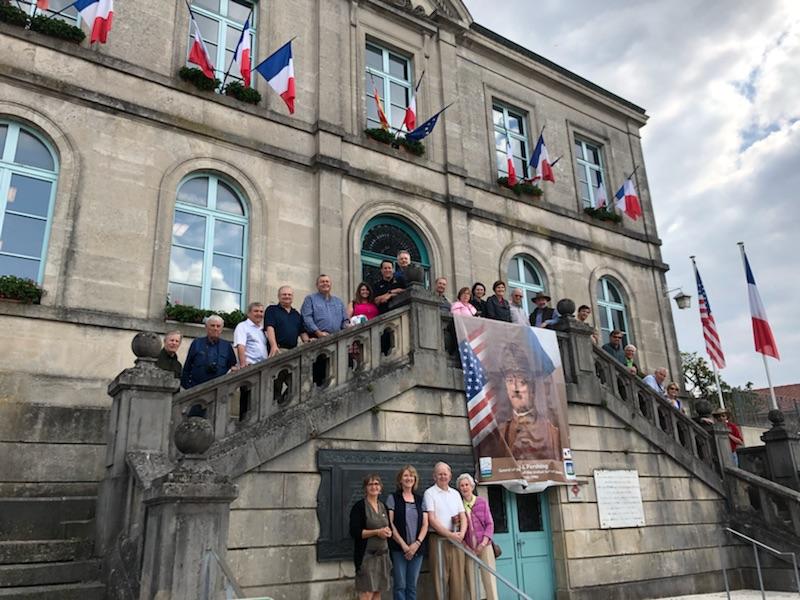
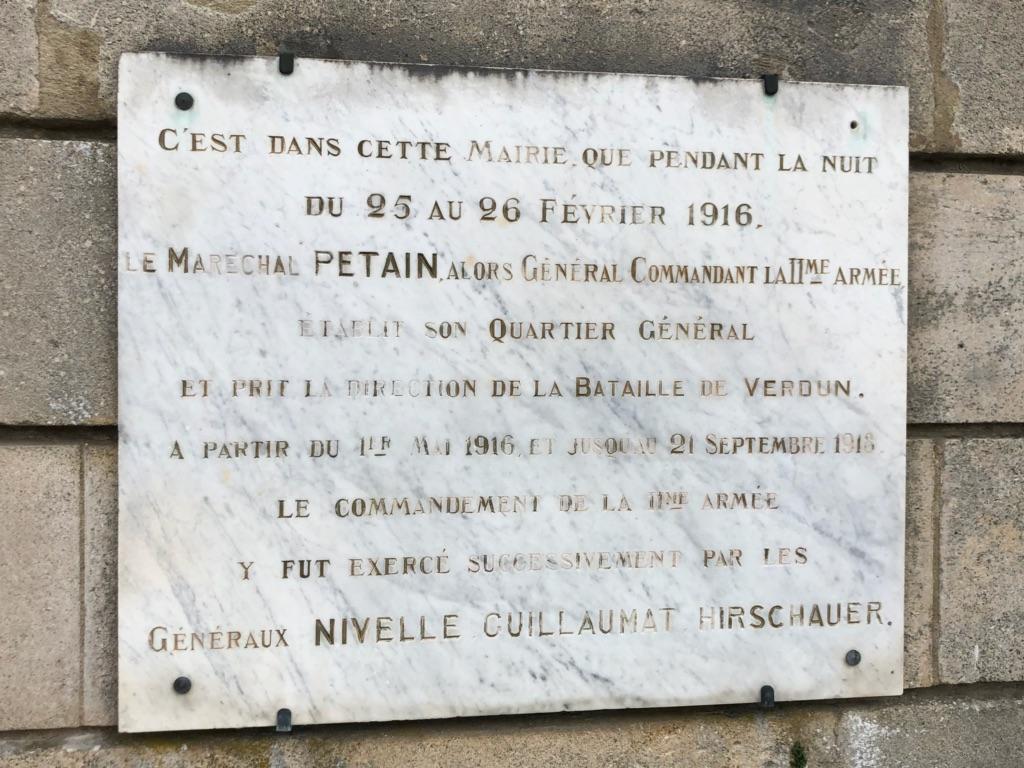
One of our tour participants, a current colonel in the U.S. Army Signal Corps and the granddaughter of Grace Banker, Chief Operator for the U.S. Army Signal Corps American Expeditionary Forces, spoke to the personal and professional importance of the actions that occurred in the very room where female telephone operators connected millions of calls.
The trip also had family significance for another traveler, whose father was Sgt. Fred W. Snell of the 326th Battalion. Sgt. Snell served with Col. Patton in the tank battalion and was both a driver of the 2-man Renault tank and a motorcycle messenger who ran the steps of HQ taking information from Pershing to Patton.
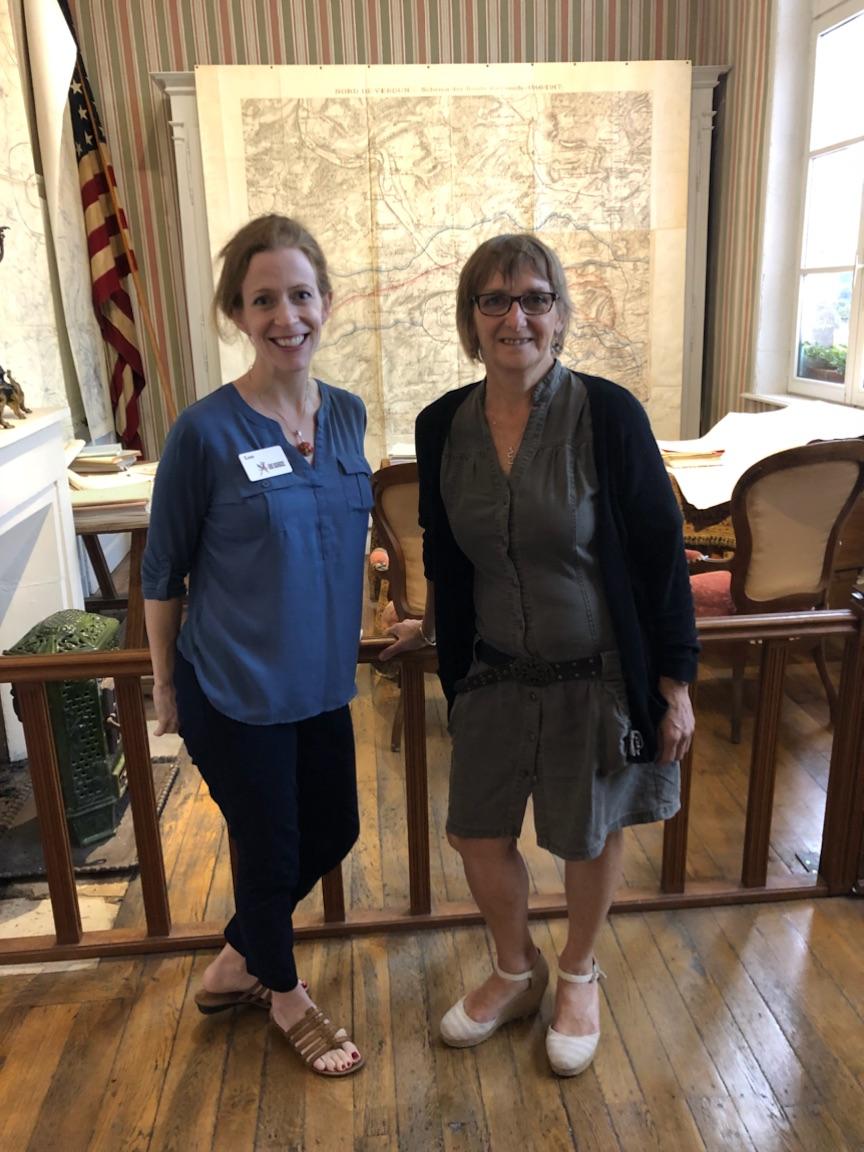
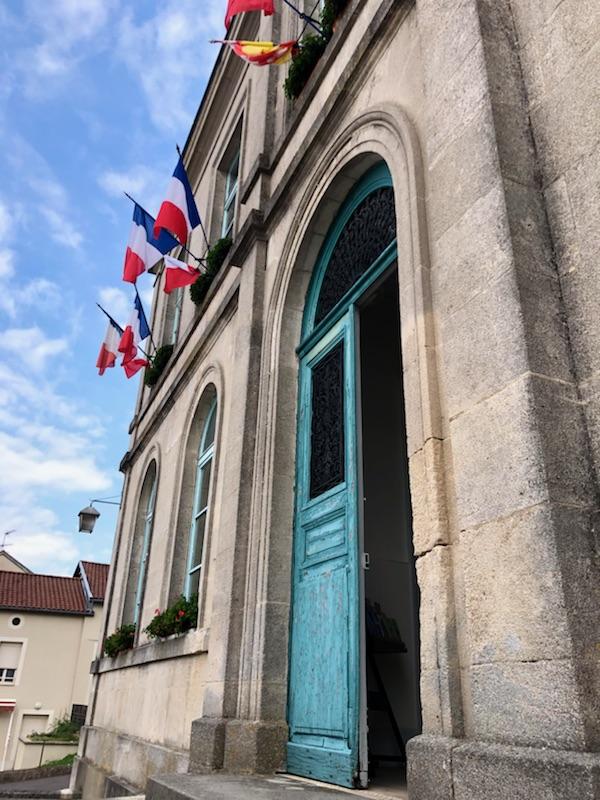
The journey continued to the stunning monument atop Montsec, with breathtaking views of the battlefields over which hundreds of thousands fought. The German held hill was one of the key areas of American advancement by the U.S. First Army on September 12 -16 of 1918. The reduction of the St. Mihiel salient in the last 100 days of battle was a key action, quickly transitioned into a 60-mile movement over 12 nights to the next battlefield.
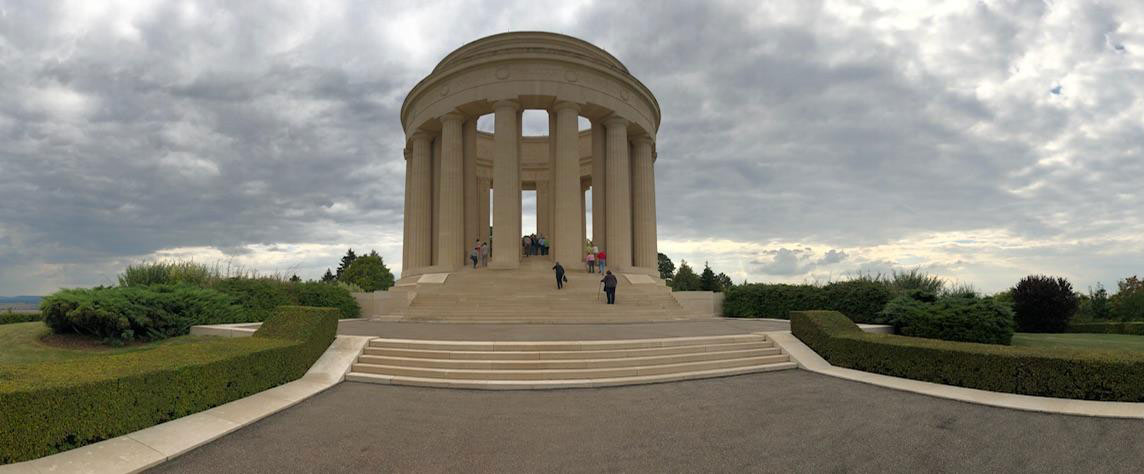
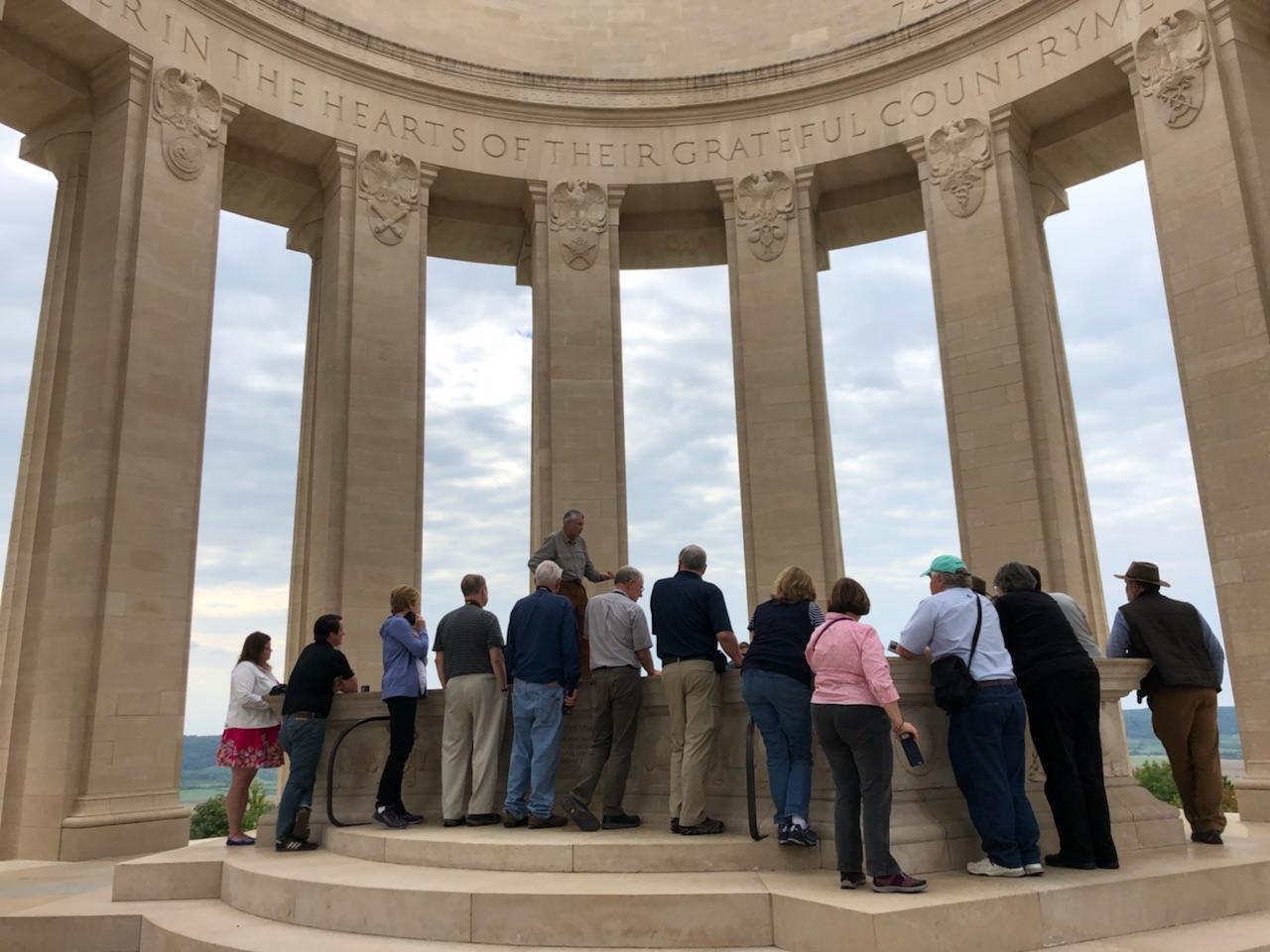
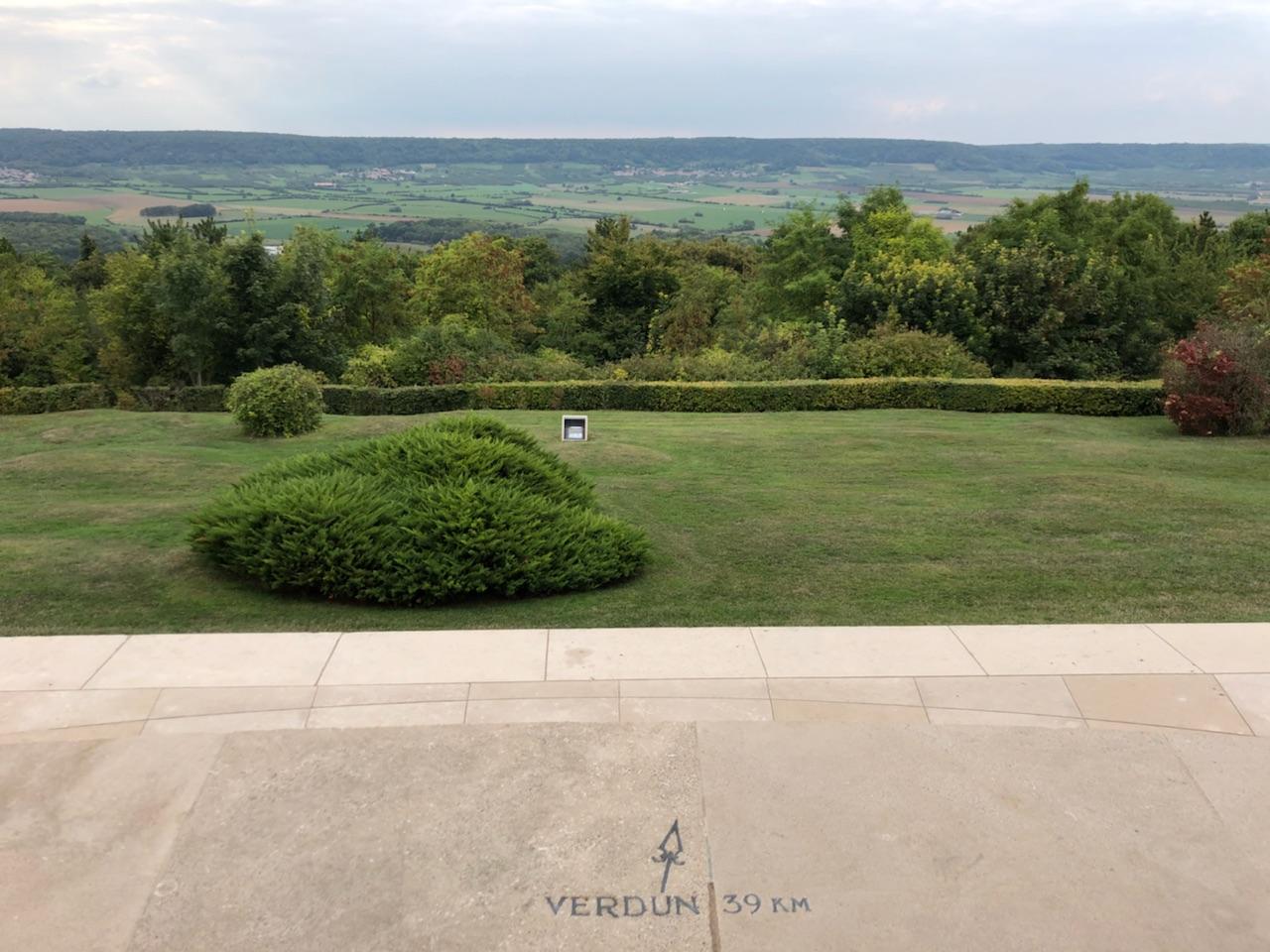
“Their devotion, their valor, and their sacrifices will live forever in the hearts of their grateful countrymen.” — Inscription inside the Montsec American Monument.
On the way to the hotel, we drove over a French village road where yet another traveler read the diary of her great uncle, whose humorous writing conveyed an energetic youth spent creating stories… one of which was made on the very road to our hotel. A dinner of duck and a house-made ice cream soufflé with local plums capped the end of a wonderful first day.
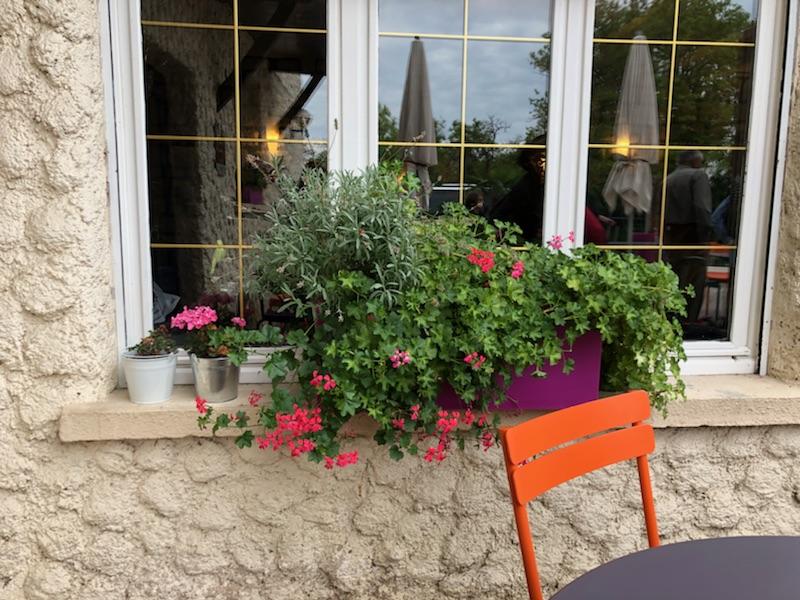
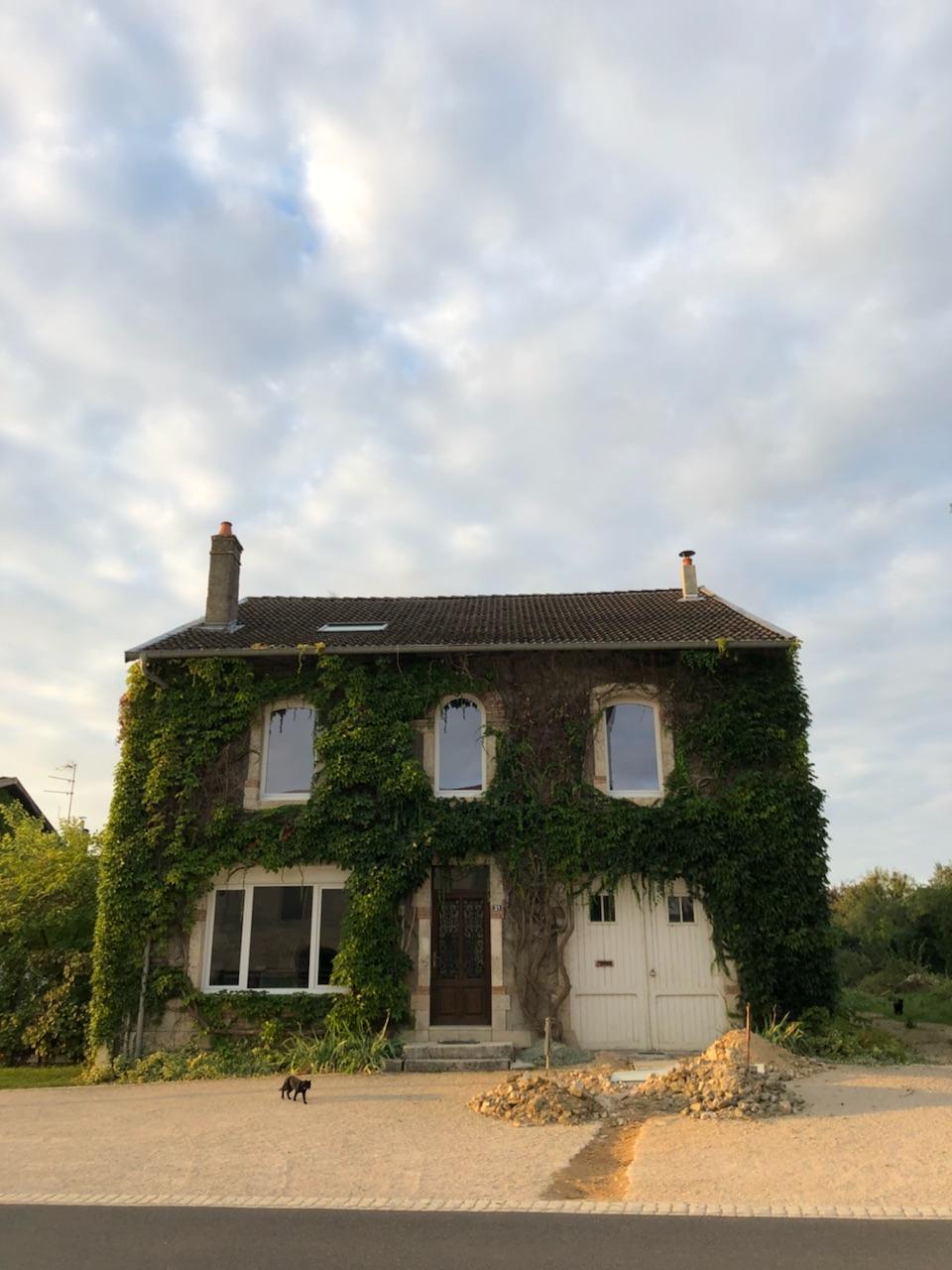
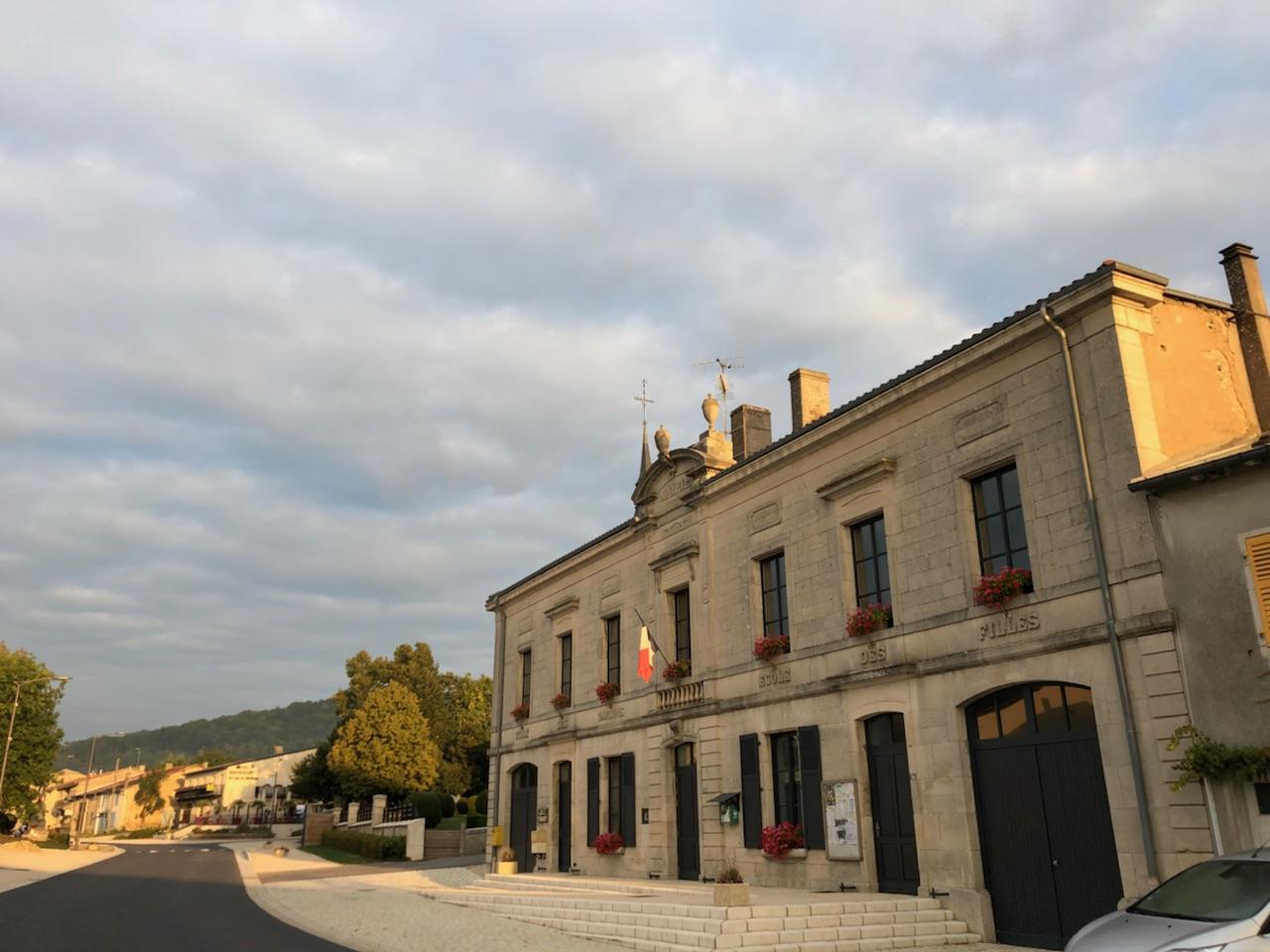
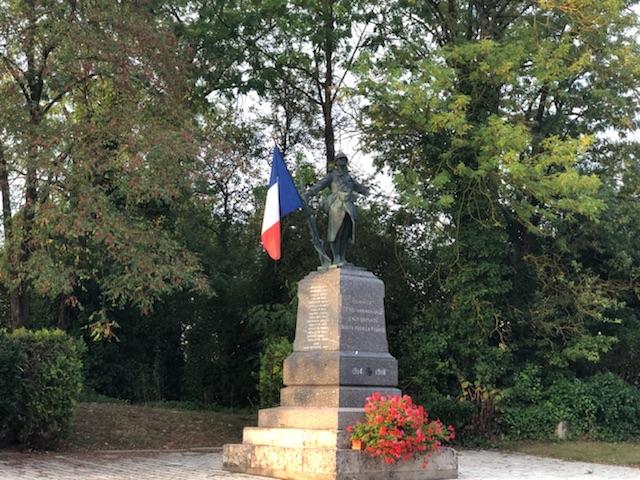
Day 2
A delightful breakfast spread of homemade jams, cheeses, local meats and boiled-to-your-preference egg gave us a hearty start.
In Apremont, where there was much fighting in WWI, are the remains of a well-constructed hospital building. It was about 600 meters from the front line, not a normal location for a hospital in WWI. It was a thoughtfully constructed medical care building, with massive roof of nearly 2 meters of concrete, and was a precursor of forward medical facilities and modern medical care, as well-described by one journey-mate with an expertise in present and past surgery.
Part of a Bavarian trench series, this German front line system had a command post built in concrete whose inscribed motto “In True Fealty (loyalty)” over a deep bunker low archway. These well-preserved trenches allowed for a distinct understanding of trench construction.
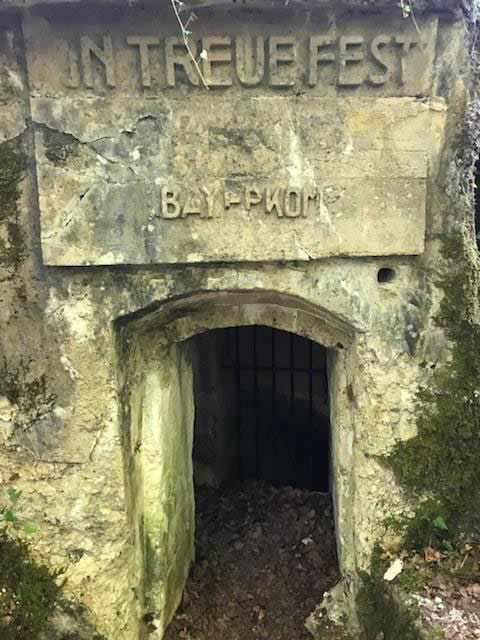
Seicheprey, on the southern end of the St. Mihiel salient, was the site of one of the earliest fights for the American Expeditionary Forces (A.E.F.) to display the German military's offensive power. In a church yard next to a children’s playground is a beautifully constructed water fountain, a gift from the people of Connecticut in remembrance of the action of April 20, 1918 — one of the few vestiges of this notorious raid. A place some considered where “Americans cut their teeth” in the war, and though it was not reported similarly in American papers, General Pershing felt it was an American loss. German intelligence reports, however, described the fierceness of U.S. soldiers and that the death toll (nearing 1,000) was in part because they would not give up. Hearing the words of those immediately involved while standing in those spaces is a powerful experience.
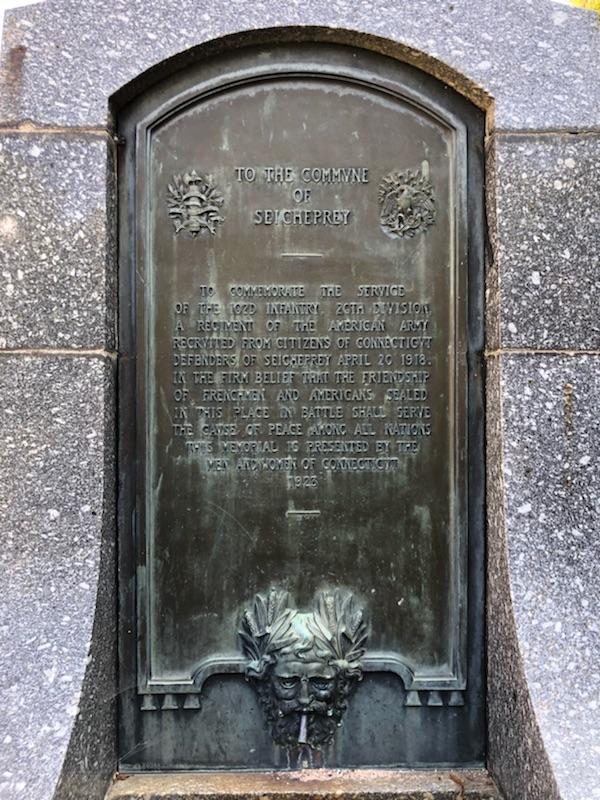
From Seicheprey to Flirey. Looking over the horizon, one could see the position of American Expeditionary Forces from where they attacked, defending the town and marching past the hundreds-year old church. Among those in action was William Soumis, of Battery A 6th Field Artillery. Near the church, a site of fighting in both world wars, is the locally-built French memorial to American divisions protecting the town. As William Soumis's great-great niece stood at the base of the monument, the impact of commemoration left few with a dry eye.
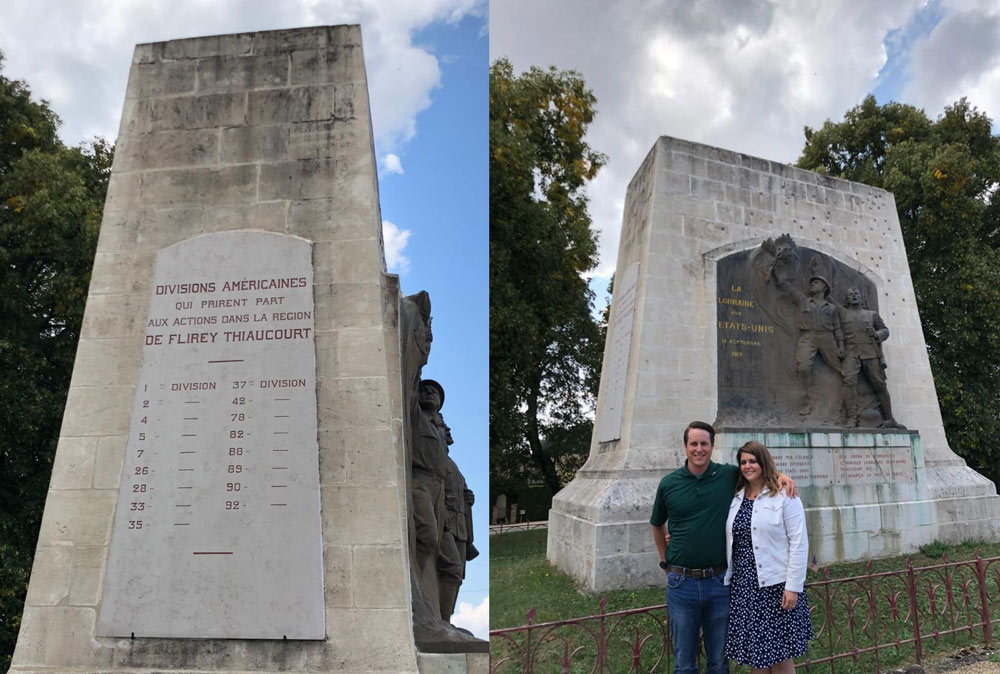
We took lunch in the town of Pont-à-Mousson, where the American Ambulance Field Service memorial is the center of a town square, clearly still the heart of the city with blue and white tents ready for a festival or concert. Letters and journals of American volunteers were read, honoring the thousands who felt the humanitarian and adventuring calling to engage in this war, particularly that of A. Piatt Andrew and the AFS.
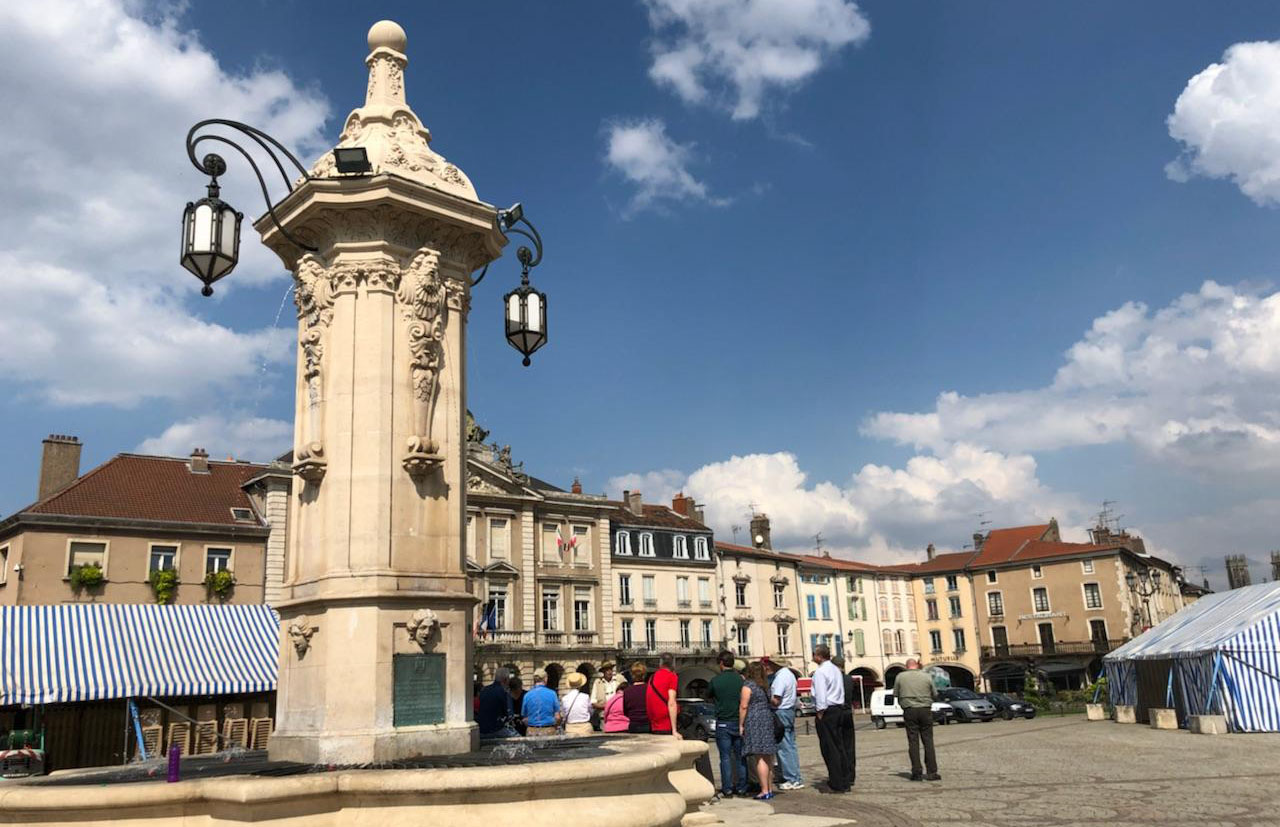
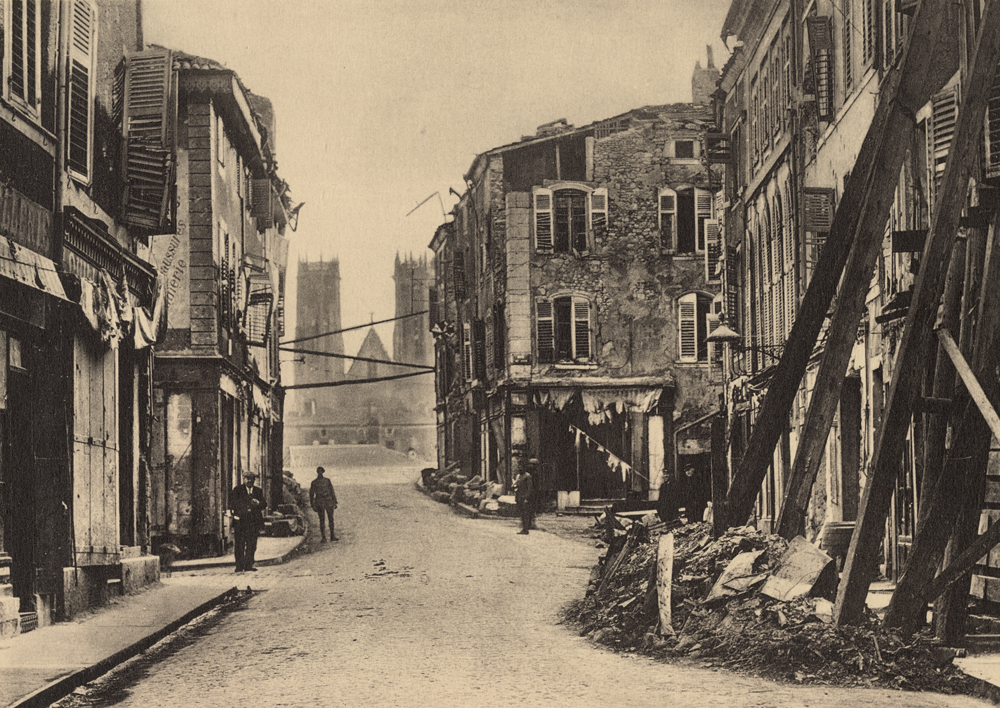
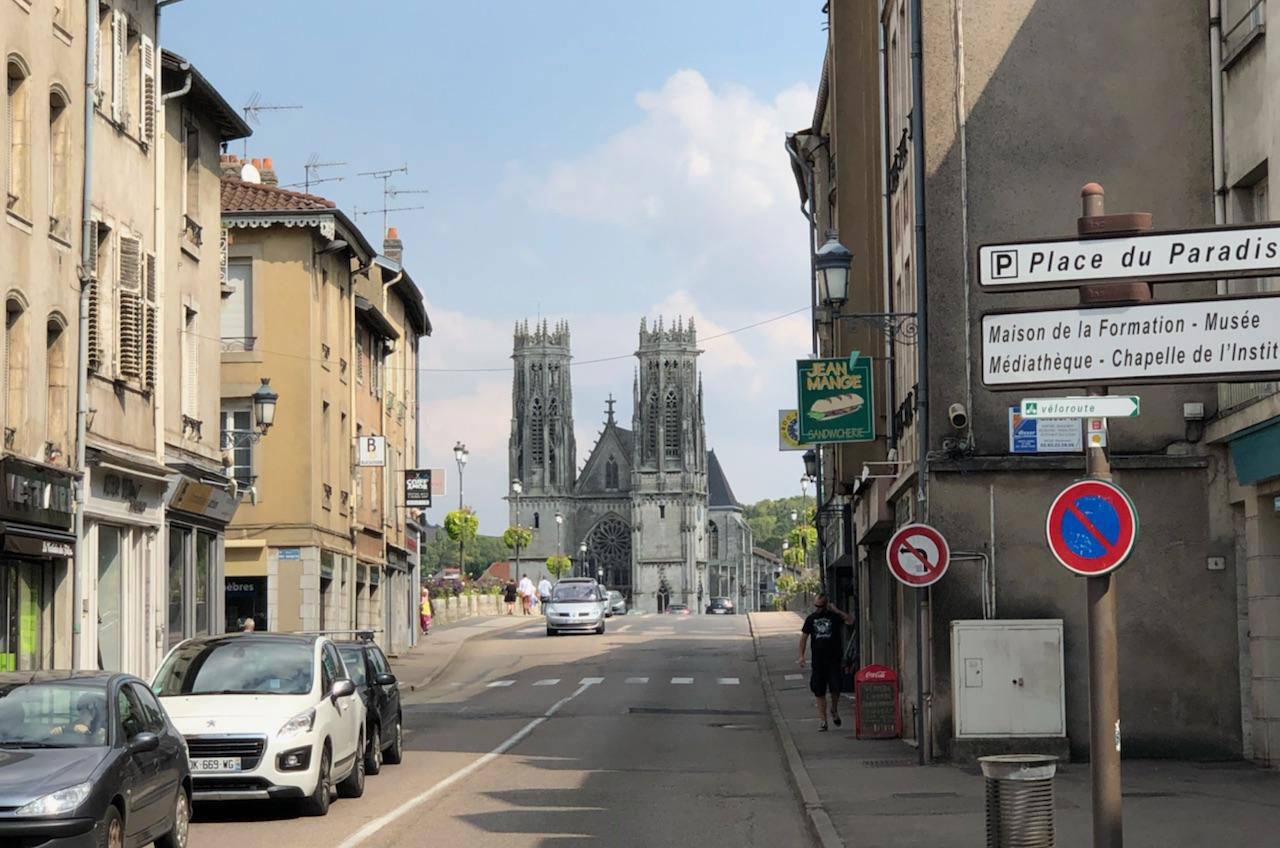
Following the American assault on the Saint-Mihiel salient, and a quick stop looking at the remains of a village and hearing the extraordinary role of Americans in rebuilding the Belgian lace economy, we ended at the inspiring American cemetery at Thiaumont. Superintendent Jeff Hays kindly gave of his expertise and time, strolling with us around the meticulously cared for American Battle Monuments Commission location, sharing stories of a Medal of Honor recipient, U.S. volunteers, a mourning mother from Maine and the offensive action leading to the cemetery’s construction. Closing out the day, members of the tour ended the day by lowering the flags.
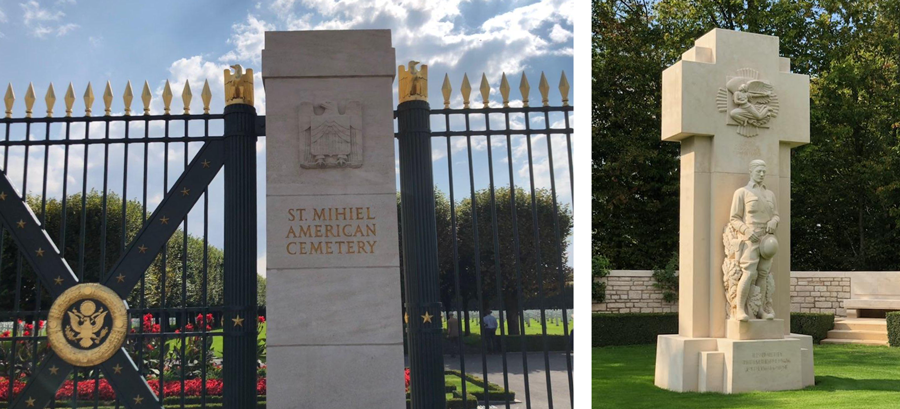
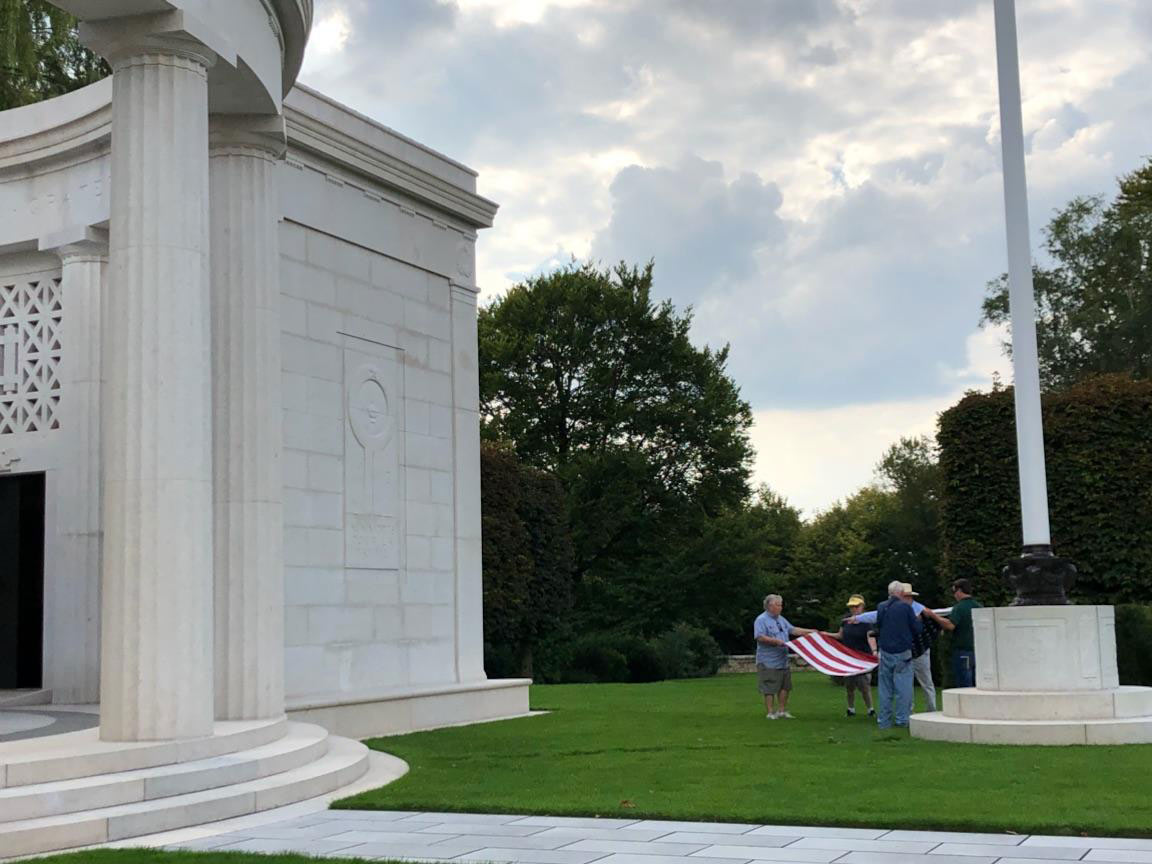
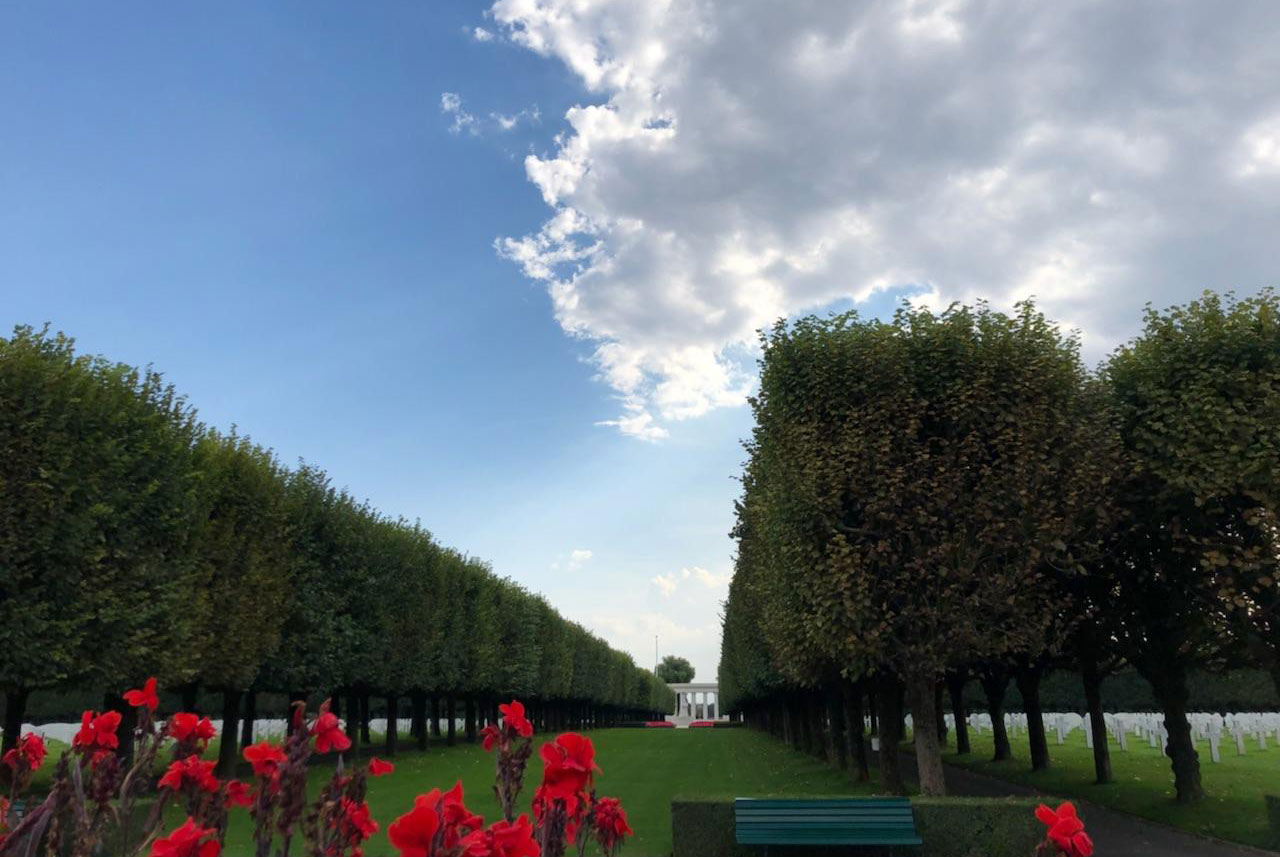
Day 3
Moving from the Saint-Mihiel salient, we travel to Meuse-Argonne. On the 25th of September, the AEF successfully supported the main offensive around and towards a railway along the back of the German lines.
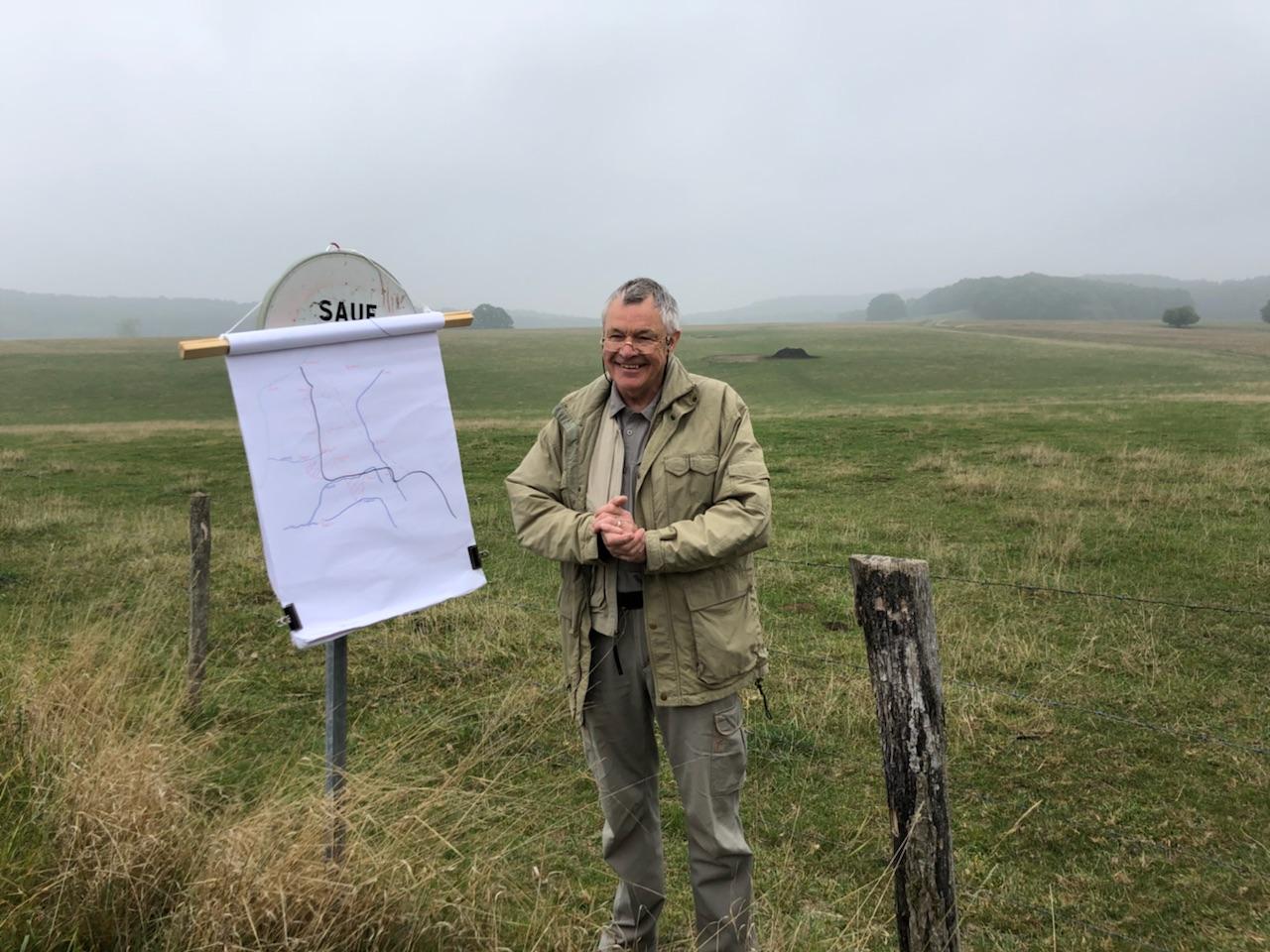
The achievement provided the way for the British to move ahead to their next achievement and onward for Allies. No lone lance corporal, division or army was responsible for winning the war.
Here was also the action of the 35th Division, many of whom were from Haskell Indian Nations University. On the night of 22nd September, in the Forêt de Hesse (Hesse Forest), Ernest Philips - the relative of another journey mate recorded an account. This is also where Harry S. Truman starts his barrage, about 4 miles north of us, and where we headed next.
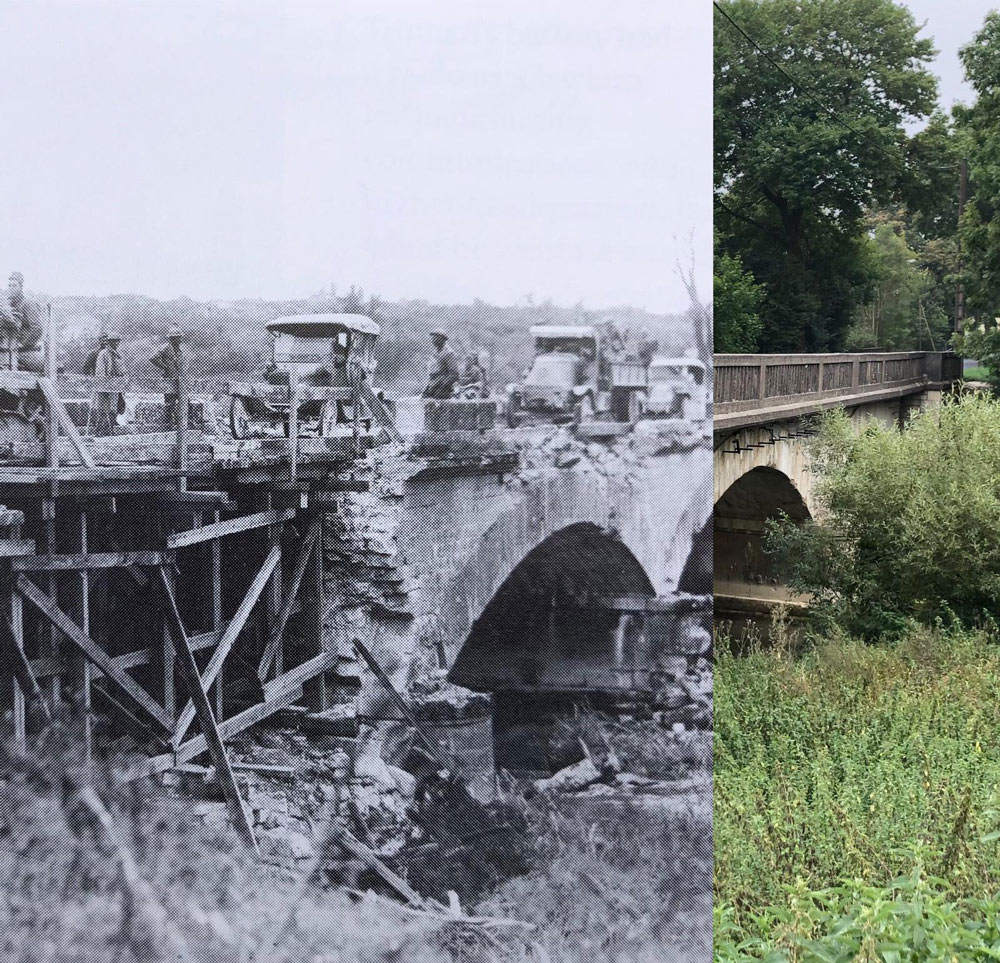
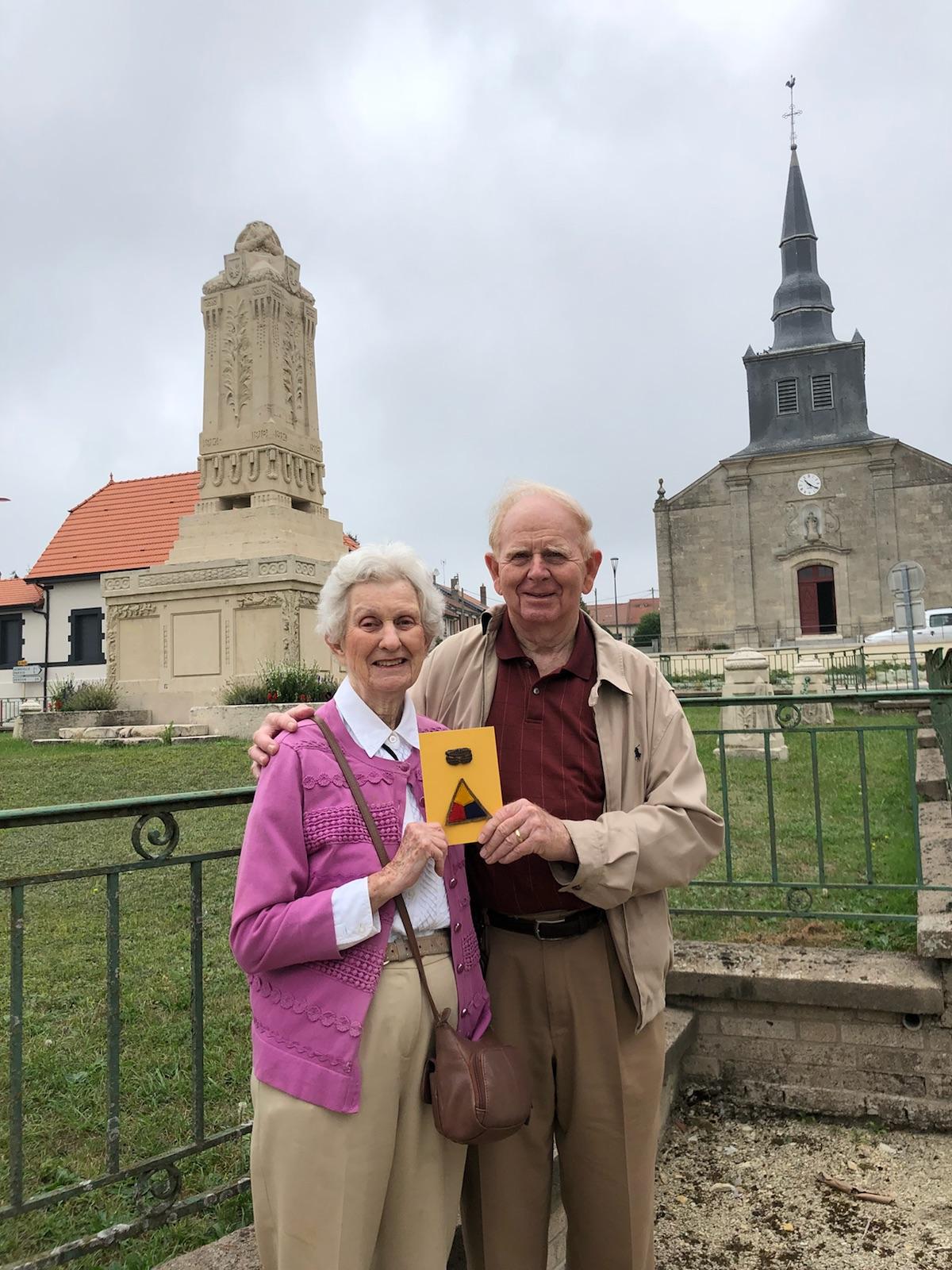
The personal connections we are able to make on the ground, commemorating history and family, are incredibly touching.
The Butte de Vauquois is an incredibly extensive network of underground mines, built within sandstone ideal for tunneling and the elevation provided clear observation of the battlefield.
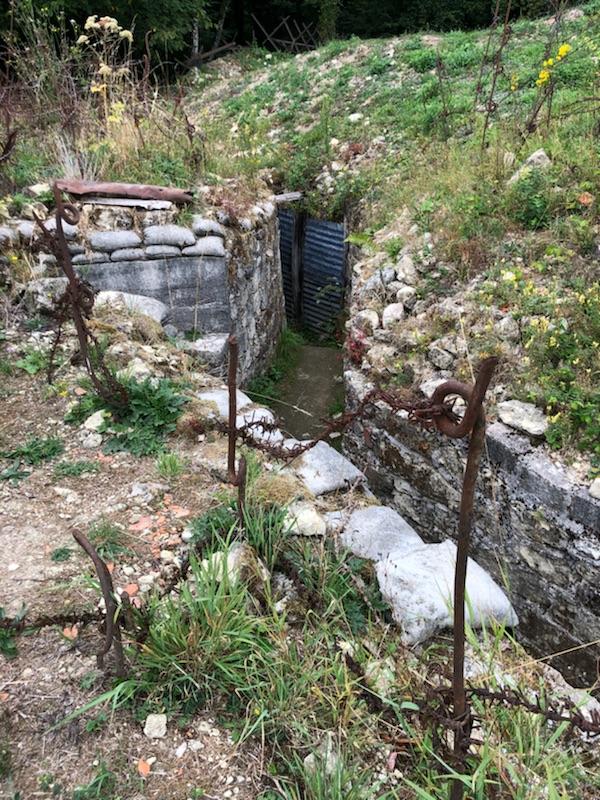
The deepest tunnel was 96 meters; 1500 to 1800 German men were garrisoned underground, and on Christmas Day of 1916, the Allied and German miners actually sang carols underground at each other.
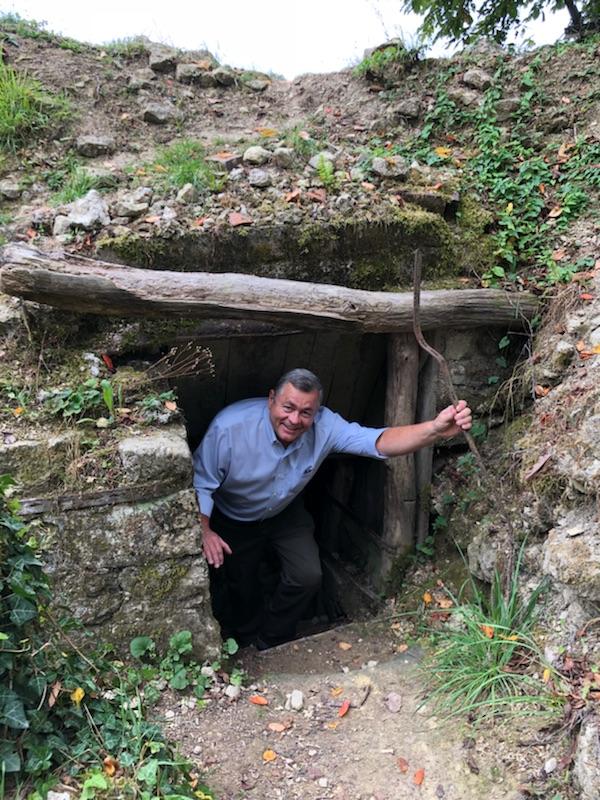
An extraordinary live-and-let-live policy occurred here: the miners would get out of the trenches every morning to provide time for ordered fire and, if none, head back underground. Once embedded, both sides had a vested interest in not pushing the other out. Being 40-50 yards apart, guns were limited to howitzers - effective but limited.
Did you know? Some guns are described in by poundage while others in millimeters. Artillery is referenced by “weight”, howitzers described by the centimeter diameters ammunition. Similarly, naval guns are described by inches.)
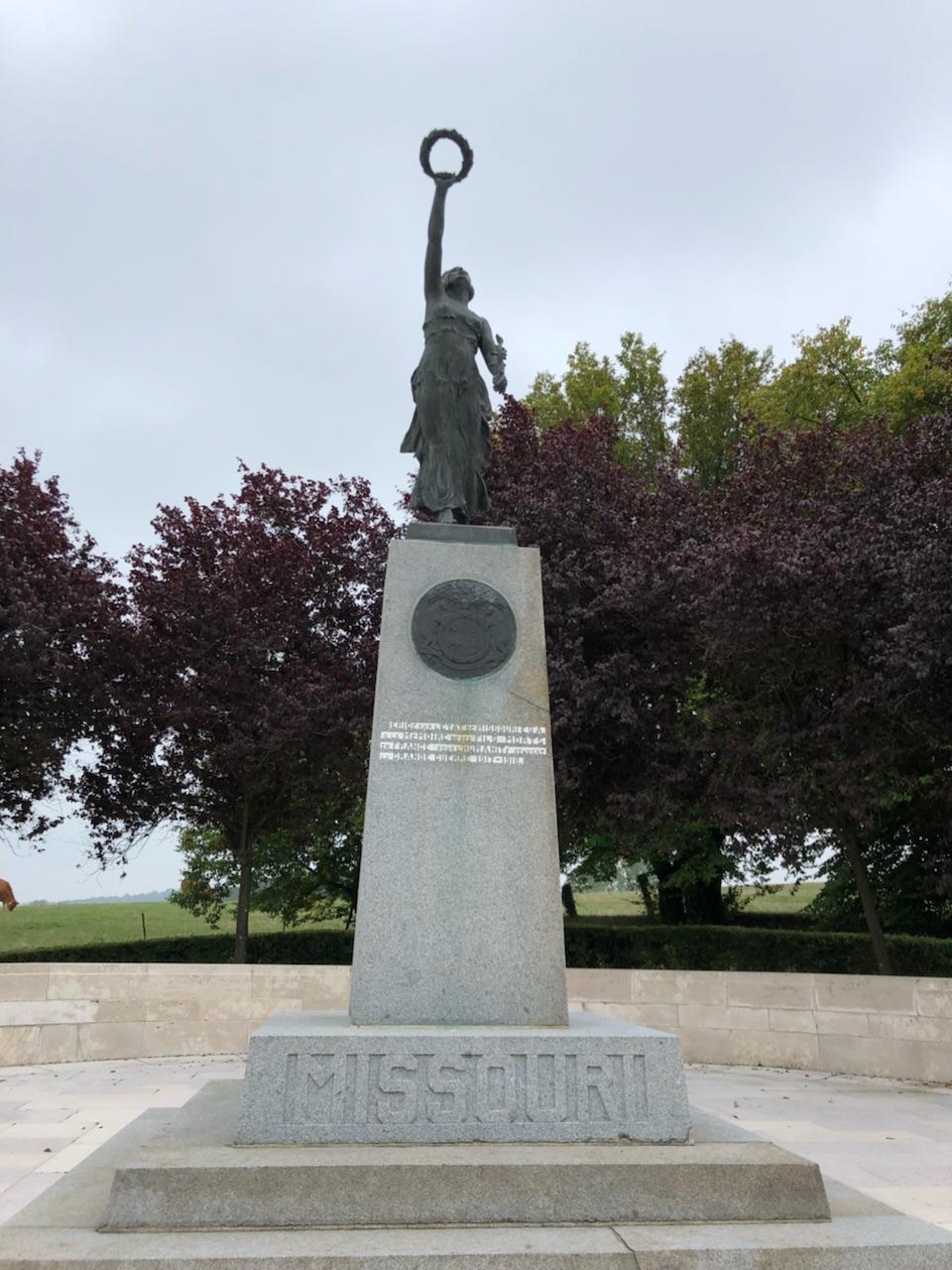
We followed the American advance to the grandstand box seat for a conversation on tank movements: Patton, Pullen and lessons in leadership. There is a steep learning curve in war, but Americans do so quickly. It is after this battle that Pershing splits his dual role to focus on overall command, building coalitions and negotiations. Here is also where Col. Patton may not have had the best day in the office. It is also the heroic action of Col. Daniel Pullen.
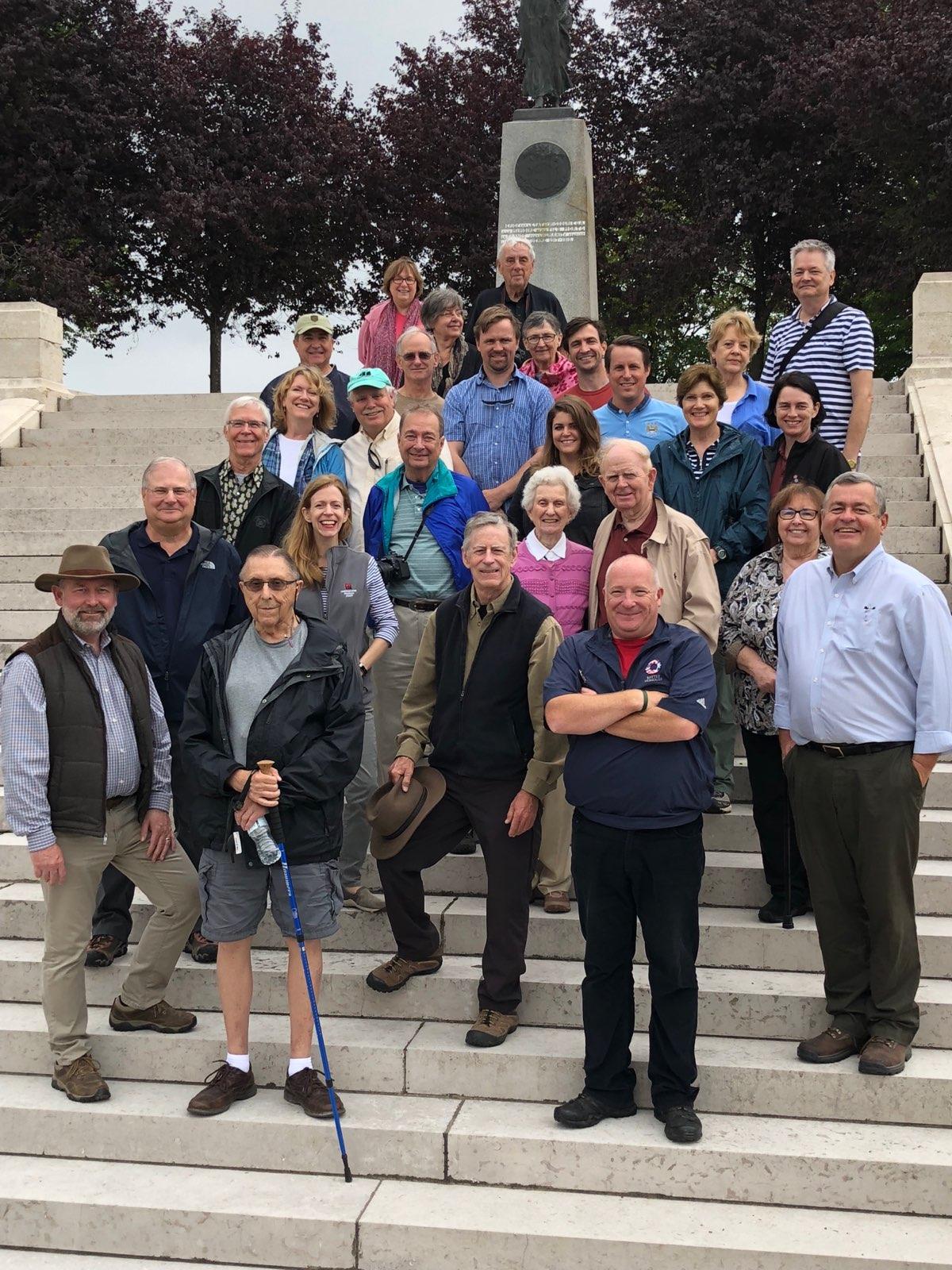
We advanced on to view the southern part of the Meuse-Argonne battlefield to explore Montfaucon and the ABMC Memorial Tower. The hill, on which the remains of a church remind of the village that once stood here, was a strategic position. In 1914, Kaiser Wilhelm understood the importance of this location, disobeyed orders and led forces up to knock French North African troops out of possession. Later known also as Little Gibraltar, the church was dismantled for fortifications.
A hard area of American fighting, a split in the attack led to difficult combat particularly for the 79th Division, and a continued debate among historians hundred years later. Gen. Robert Bullard led III Corps on a rewriting of Pershing’s orders, potentially to win the accolade of the battle, and missed the potential to win Montfaucon on the first day.
For another in our group, his grand uncle with whom he was raised, fought in the 316th at this very hill.
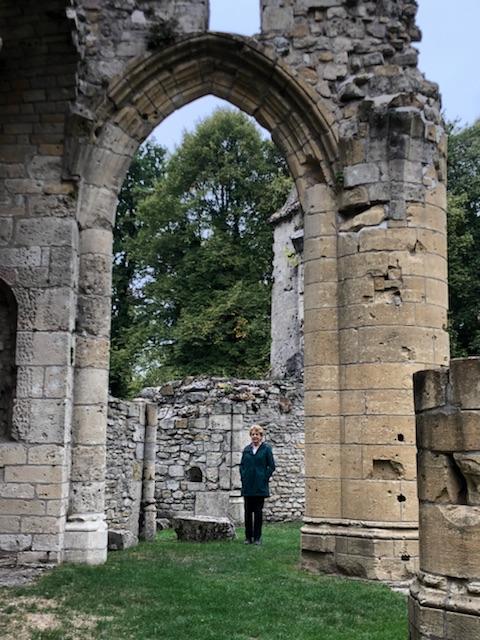
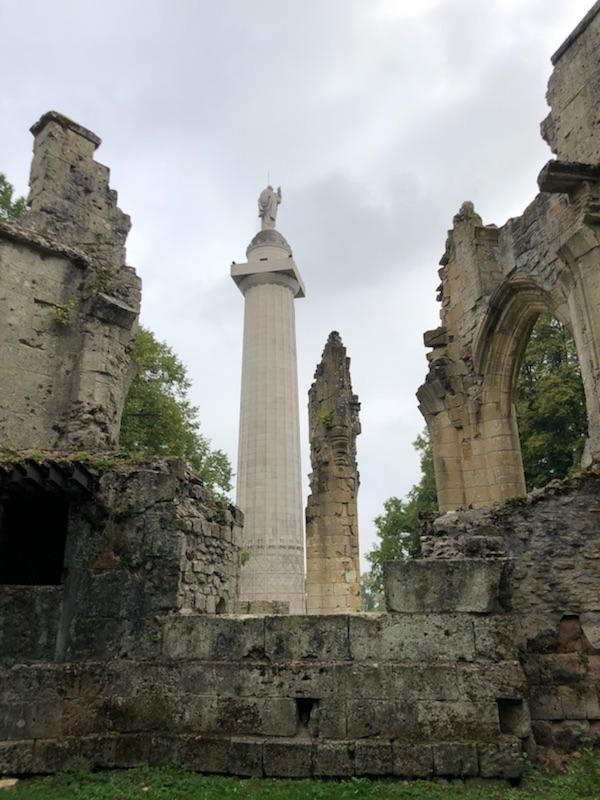
A deeply moving visit and a conversation with a local regarding the role of the small village’s church in both World Wars. Also the site of one of the most famous photos of the Meuse-Argonne, A journey mate with the Identity Discs of his uncle, who walked this very road 100 years earlier.
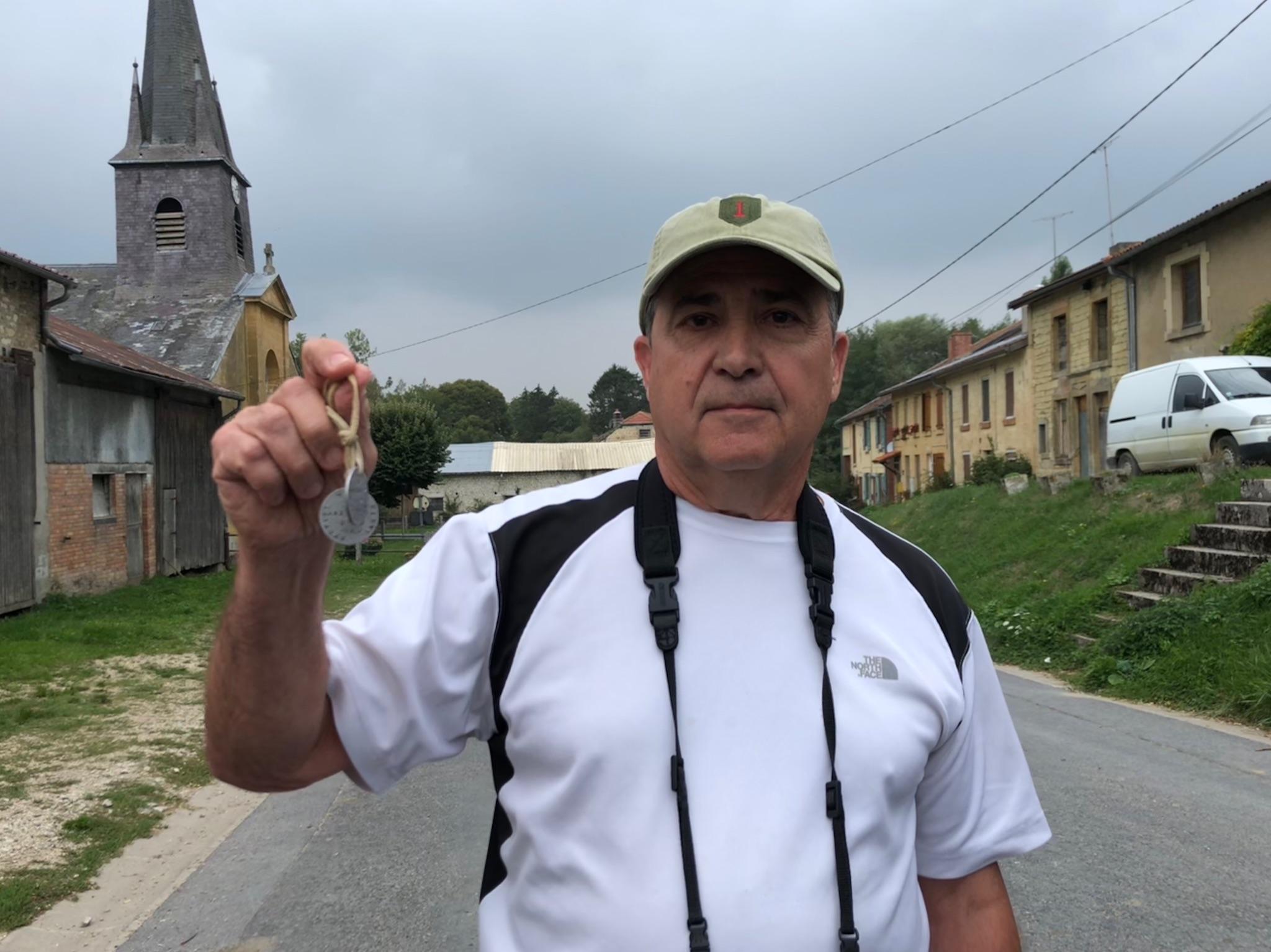
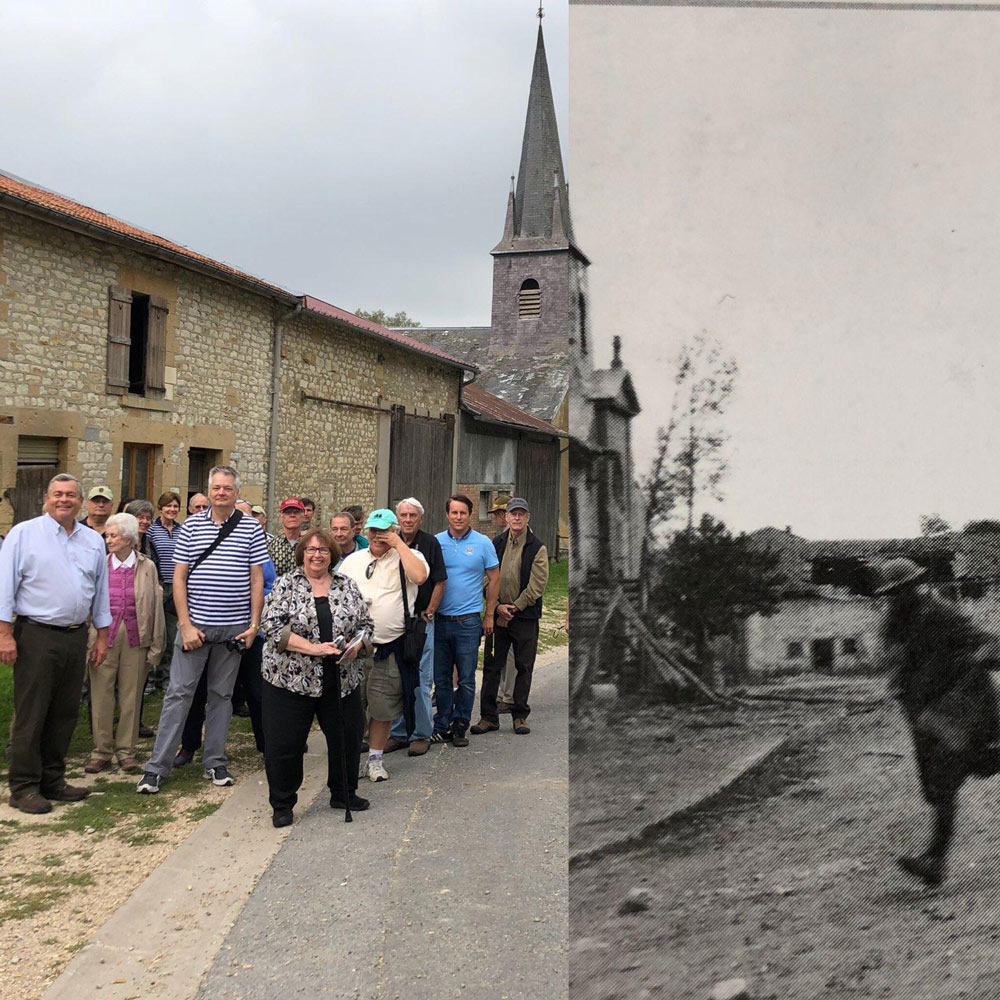
A further drive took us to a village where we learned of the action of Harvey Stefani. In this village of 35, a woman kindly came out to greet us, generously gave of her time and obtained the key to the local church to share the rich history of this town during the world wars.
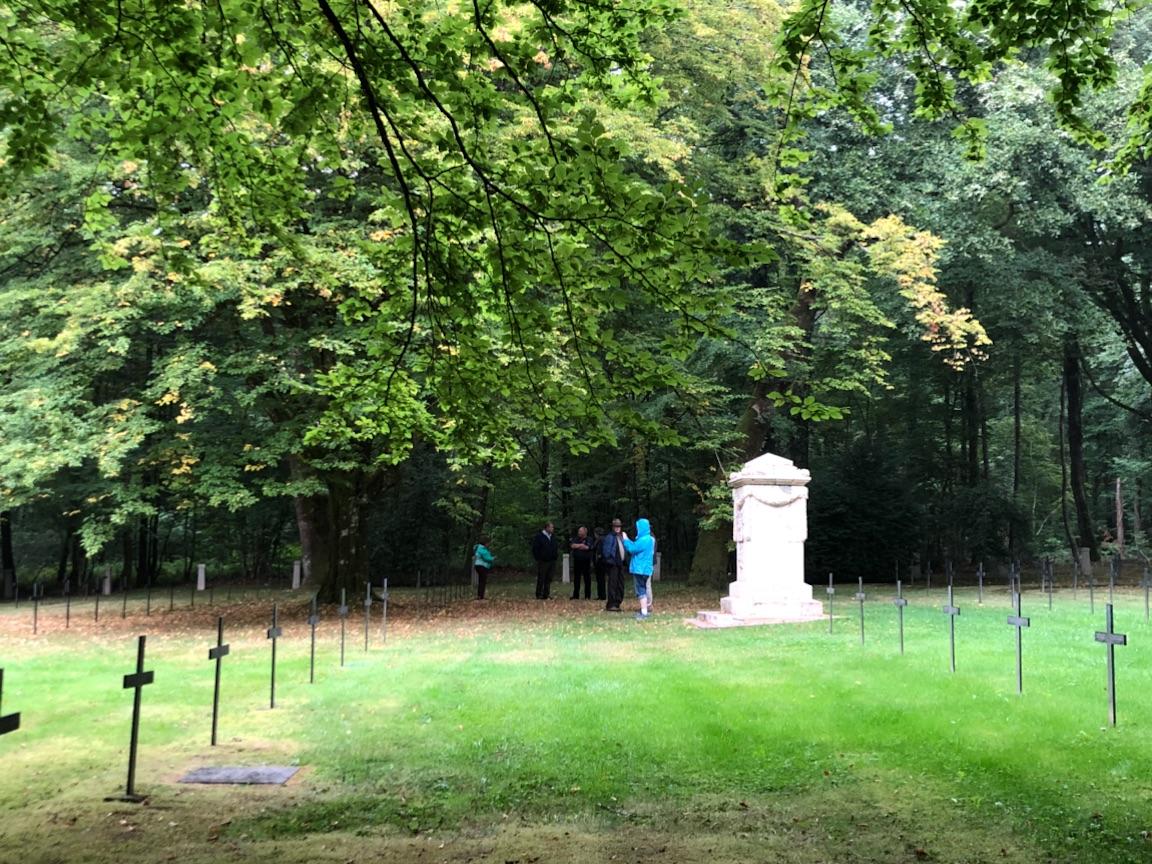
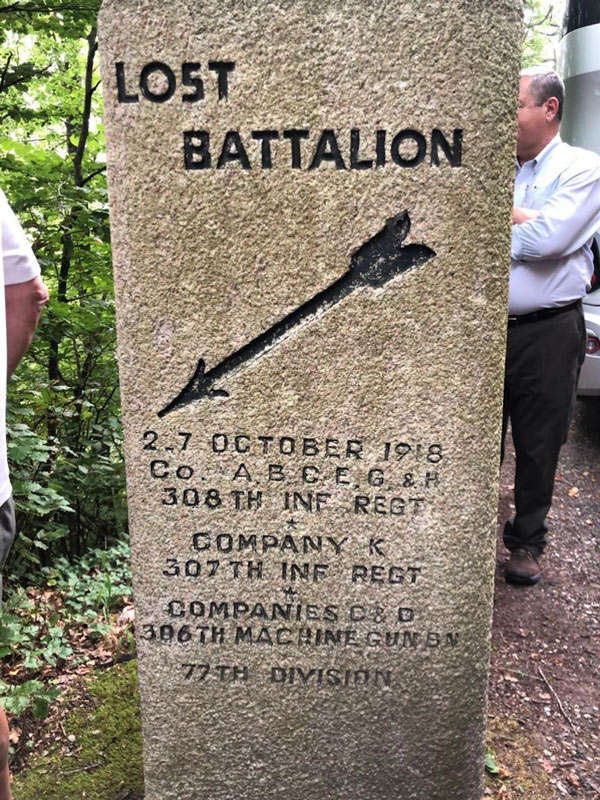
As our day ended, we delved into the history of the 77th Division and the “Lost Battalion”, neither lost nor a battalion. Peering over the edge, in the same time of year the harrowing action occurred hundred years earlier, it is clear how it transpired.

Day 4
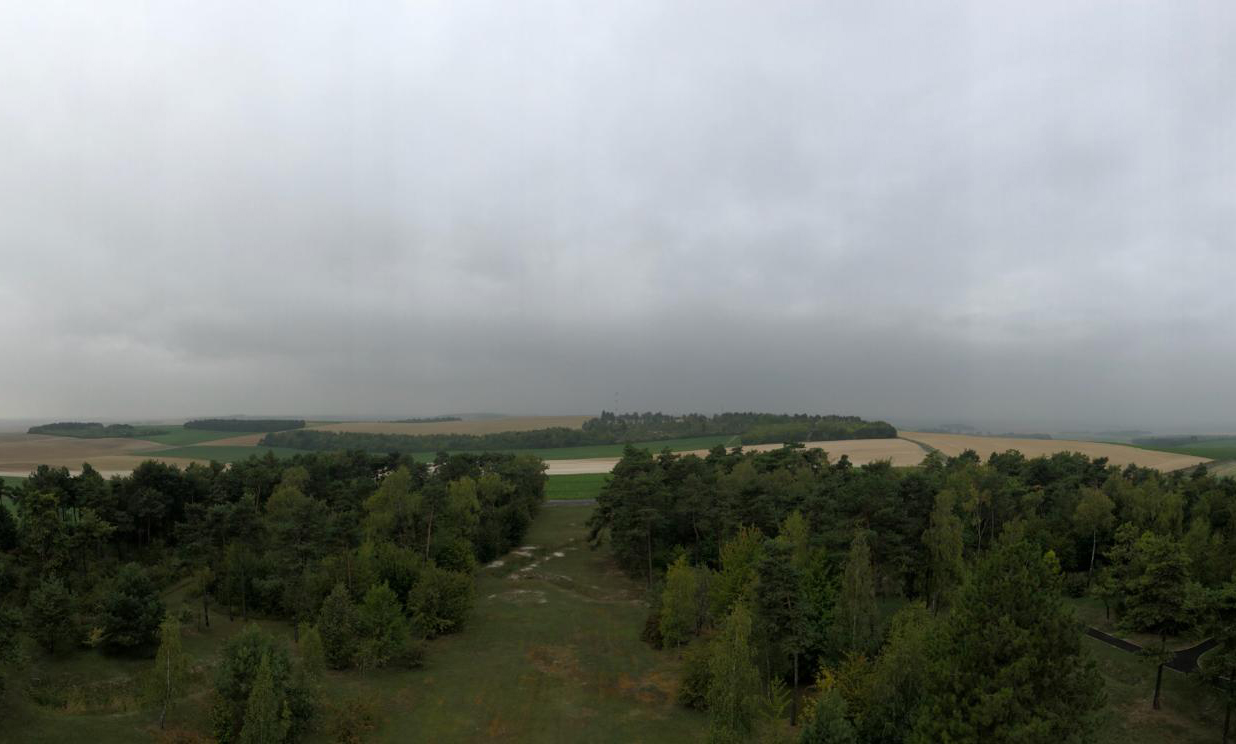
“It lies on your blanket and over your head.
There's mud in the cover that covers your bed.
There’s mud in the coffee, the slum and the bread.
Sunny France!”
A day of Autumn rain, with paved roads, a warm coach and hot lunch — ours was not the trench soldiers experience. The fog and precipitation was a good reminder that weather was a determining factor for many an action during the war.
This cool, misty morning we began at the base of the memorial to the 369th Infantry of the 93rd Division - they won over 70 awards for gallantry, brought jazz to Europe and spent the longest time in the trenches of any American regiment. Celebrated by the French, a segregated society derogated the feat. With 191 days spent in action and 171 individual medals, this memorial was recently built by the French to honor the heroic accomplishments of these men.
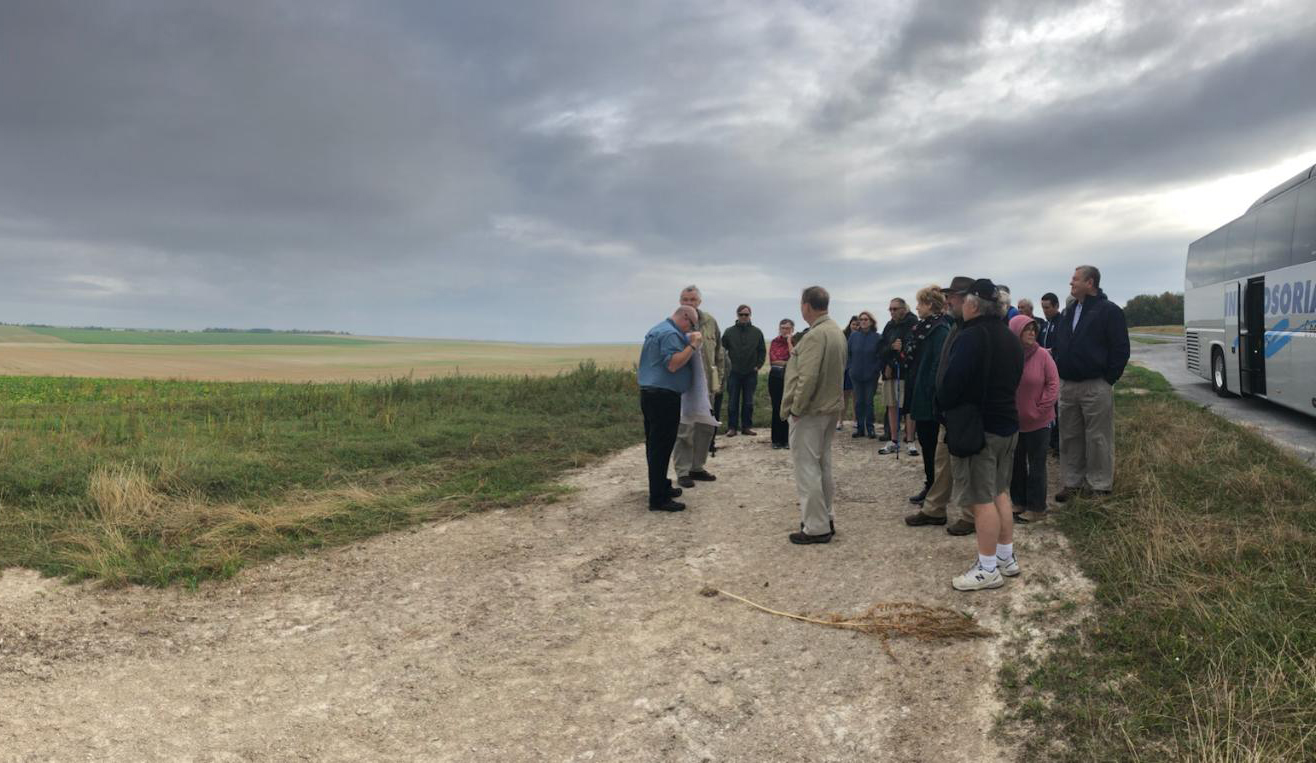
We surveyed the expansive flats leading to Blanc Mont and an abridged masters class in the events that took place there hundred years ago.
Did you know? Part of the enduring impact of WWI is the growth of U.S. aviation industry. During the war, American pilots were dependent on French aircraft. Late in 1917, over 150 million dollars was approved by U.S. Congress to invest in developing air war technologies. This act became the impetus for US air power in the 20th century.
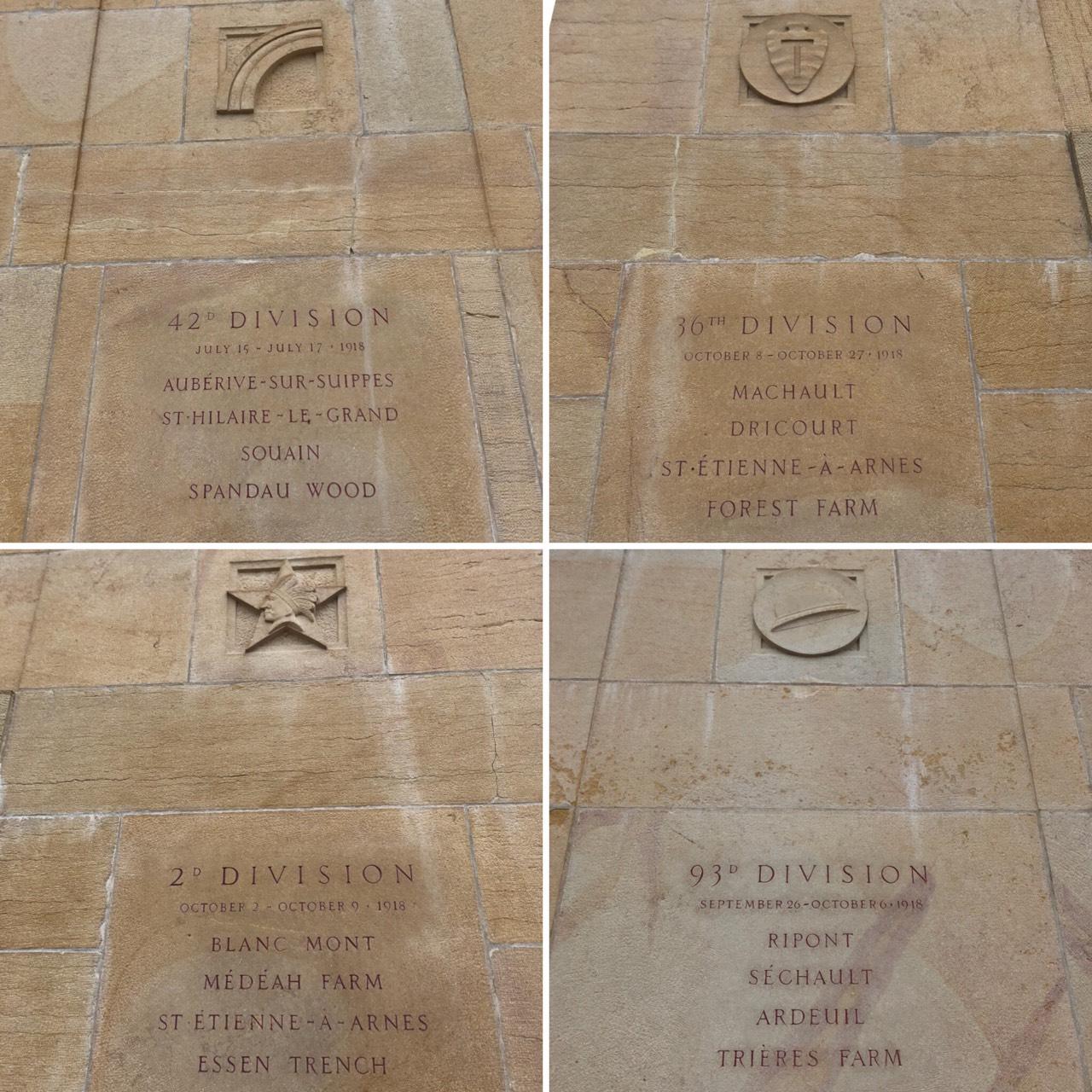
At the Sommepy Memorial, an 18.4 meter tower provides a view of the battlefields of Autumn 1918. Within the battles of the region, the French felt this was one of the finest divisional actions done. After near 4 years of entrenchment, fresh American troops created a German retreat of 20 km. Under the leadership of Marine John Lejeune, the U.S. Army 2nd Division took 9 km of ground over two nights. Creative initiative was responsible for the success, including placing German speaking American scouts on either end who went out on the flanks, told any German they found they were in retreat and to head with them towards the middle and as they did they were captured as prisoners of war.
As we traversed through the bucolic French countryside, It was a day remembering individual stories: Alvin York, Charles Frost Craig, James “Roy” Sone and John Lewis Barkley among others. Fascinating accounts of incredible lives.
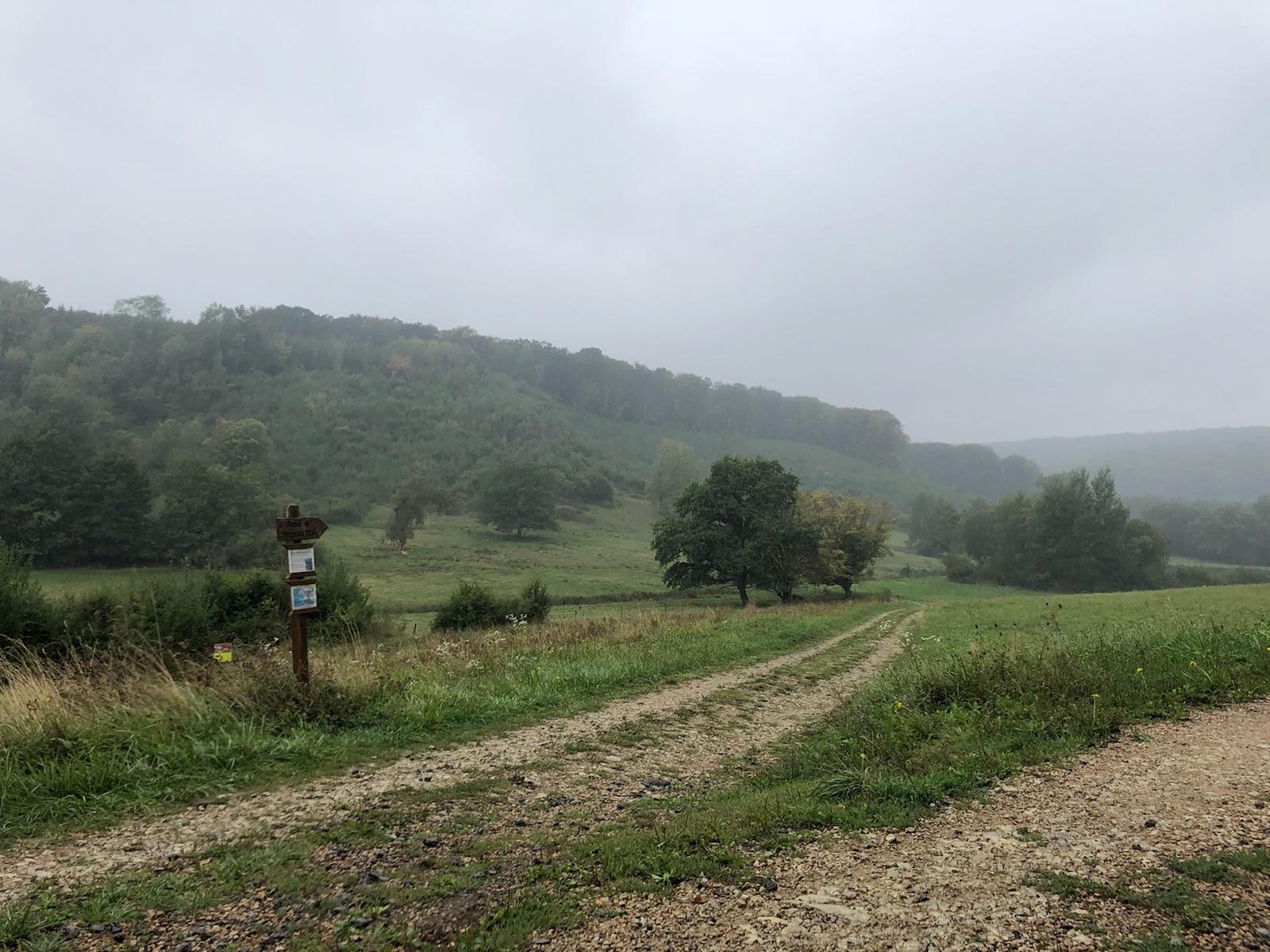
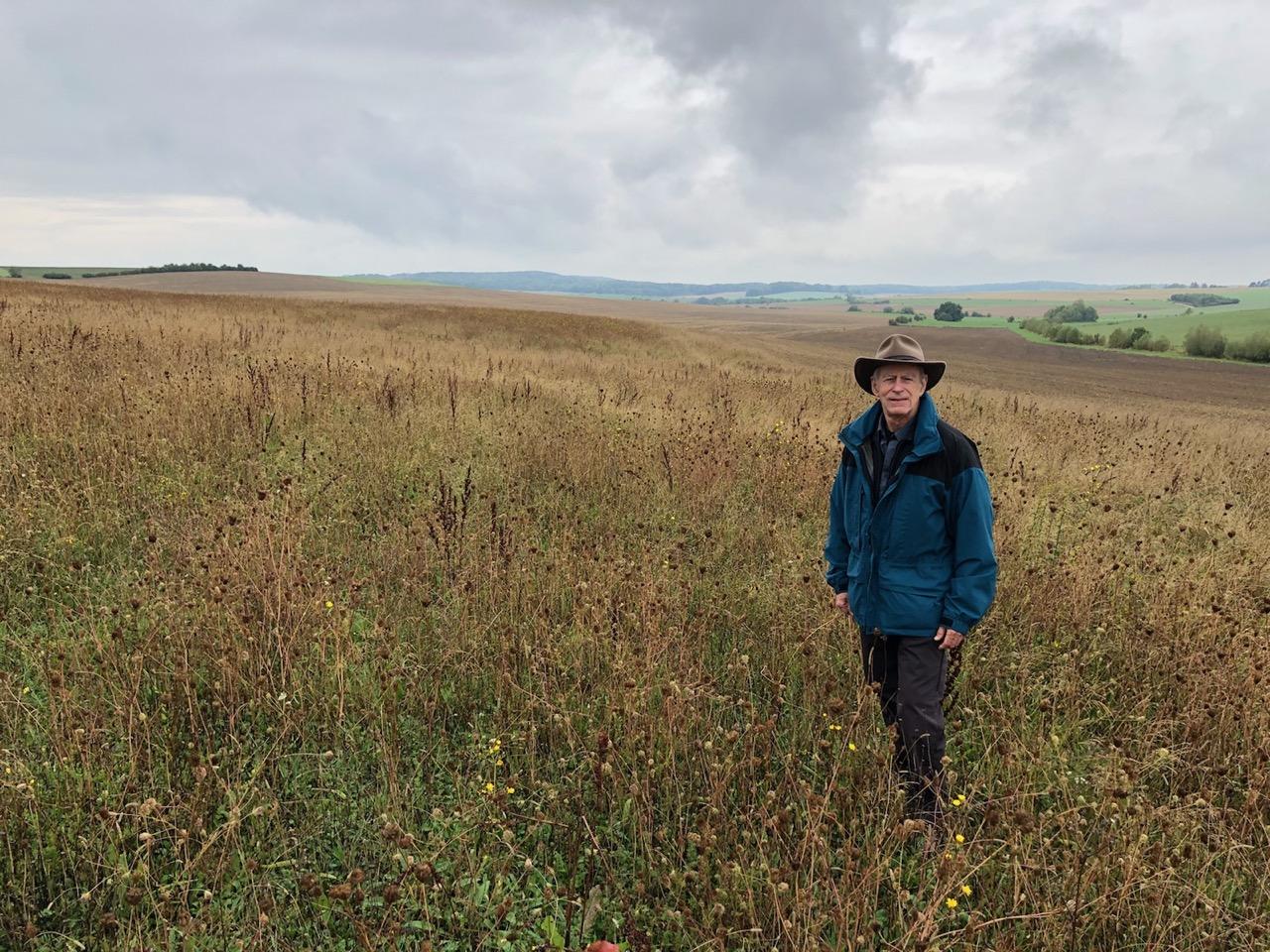
It was also a day commemorating the multitude at the Meuse-Argonne, the largest American battlefield cemetery of WWI with over 14,000 marked headstones. “There is a national desire to do honor, to our utmost power, not only to the memory, but also to the mortal remains of these Americans.” — Chaplain Charles Brent, U.S. Army 1920
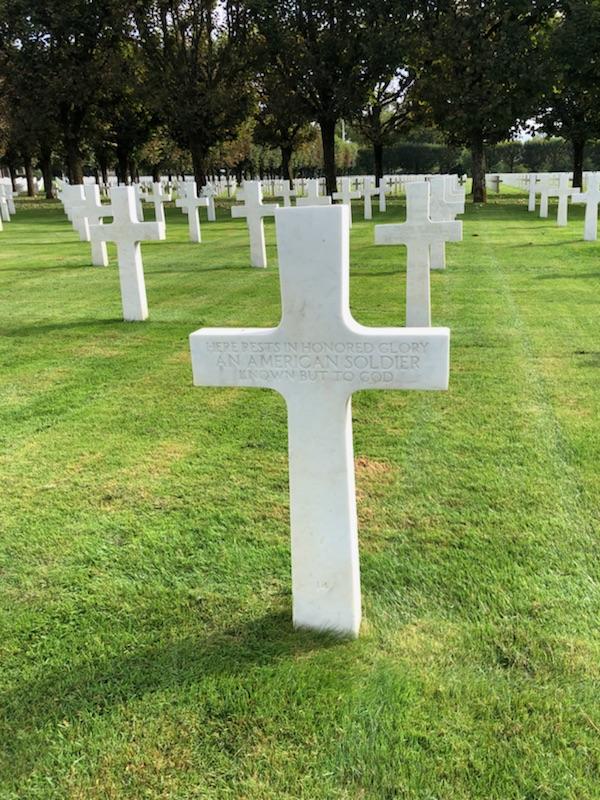
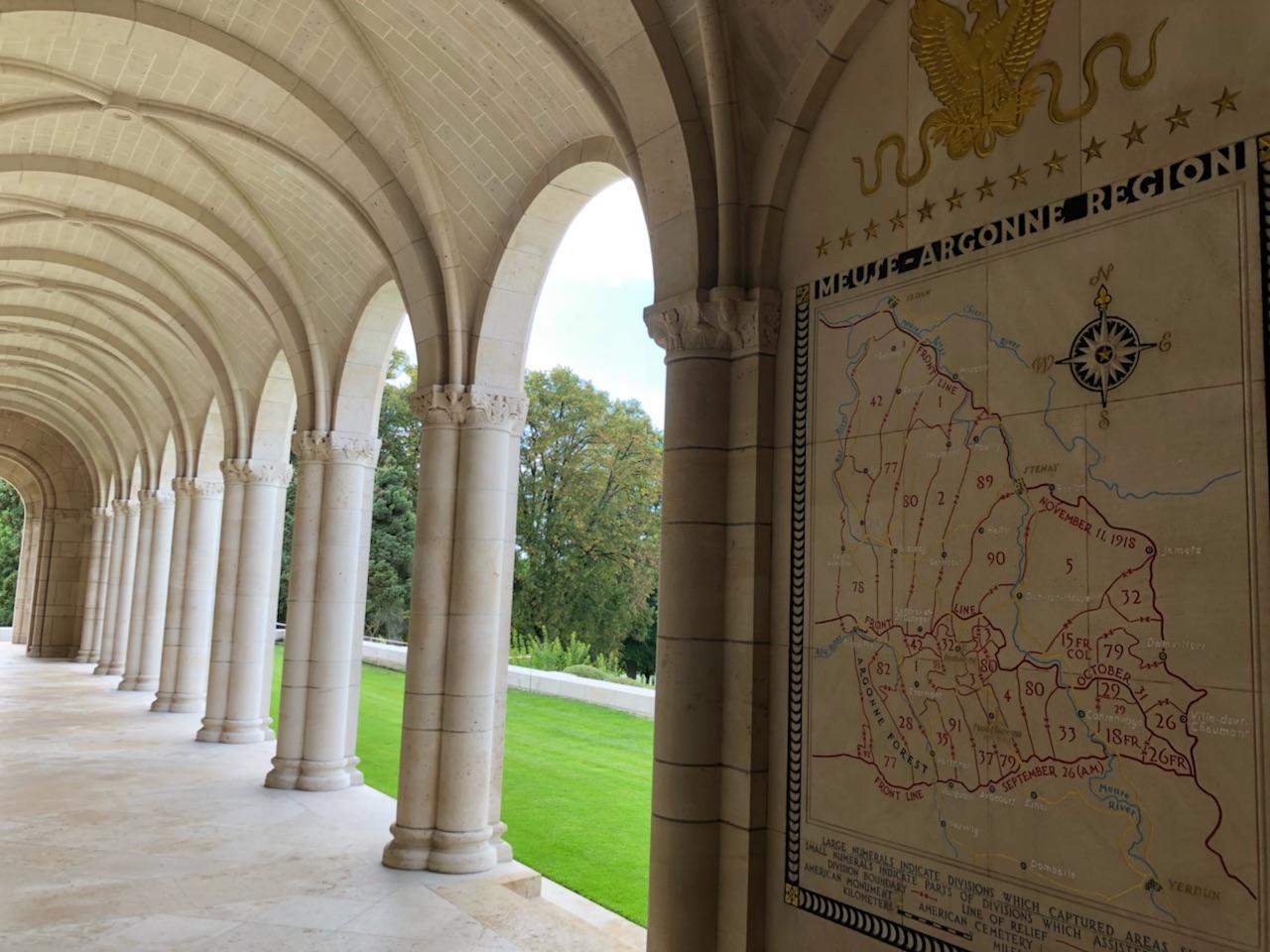
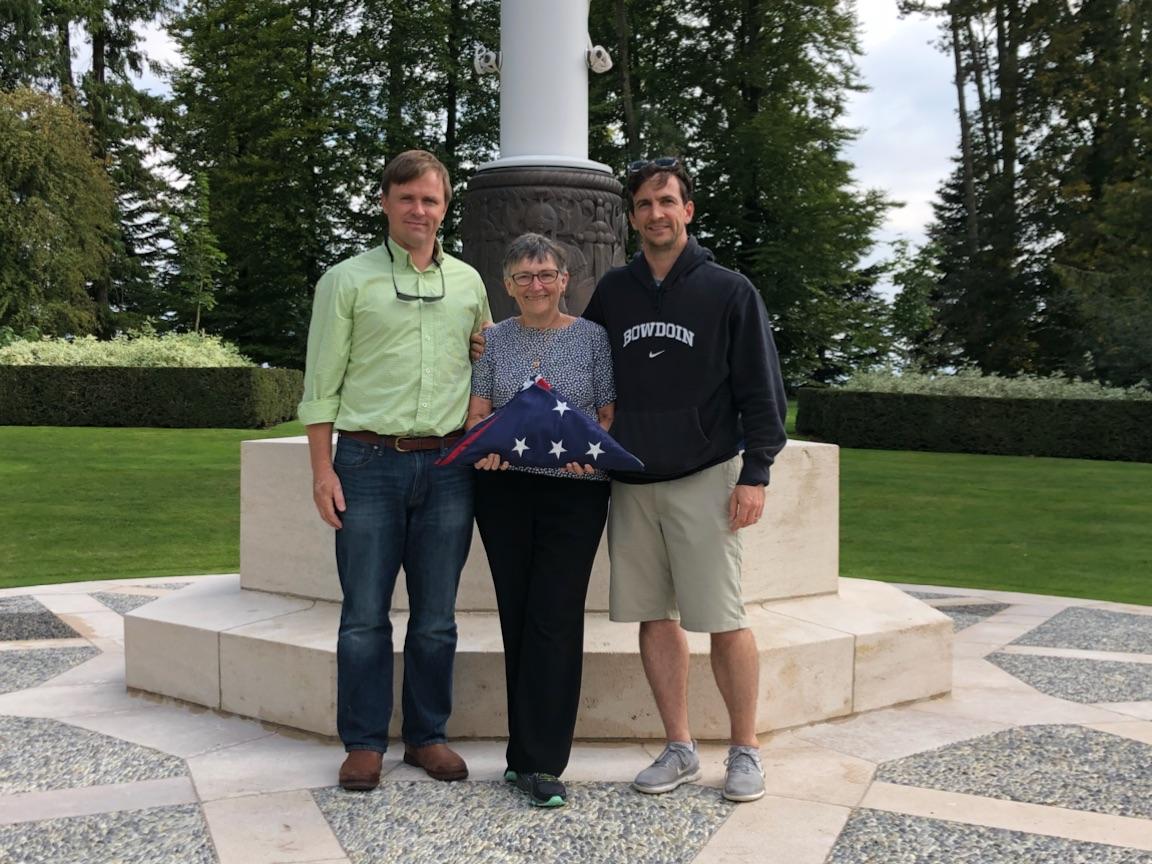
But the day belonged to Corporal Frank Courtney Lane, 110th Engineers, 35th Division, American Expeditionary Forces, who 100 years earlier wrote these words:
Somewhere in France,
September 7, 1918
We are getting acquainted with the finest people in Europe - the French. They are the greatest home lovers in the world. Families have lived on the same little plot of ground for hundreds of years. Imagine the American, raised in a small town, working hard for fifty years and never getting any further than fifty miles from home. Their towns have no attractions for an American, yet they suffice the needs of the people and surely are a paradise for the boys just out of the trenches.
Probably you have read of town criers of olden days in New England. In this town there is a man who after attracting the attention of the people tells them the news. It surely is the lowest type of newspaper that I have ever seen. What would people in the States do if they heard some man reciting how the “Cubs” beat the “Sox” in the great series at Chicago. It would either mean that he had won a big bet on the “Cubs” or was trying to get by the [draft] exemption board.
The fellows who do not get across will miss the greatest adventure that life can offer. One will never know what war is until they have been through it. The lucky ones will come back and tell their tales of woe, but there will be lots of them sacrificed. Loving parents and friends will mourn them and think it all a mistake. A fellow over here cannot feel that way about it, especially after he has seen the French and English with their gold stripes on their sleeves and their sallow faces that tell of this suffering and misery.
Here’s hoping that we make a home run and make it soon. The game is won but there are a few more innings to play and then the whole world will shout with joy.
